2020-2021 Astronomy Cafe transcript videos and meeting notes.
During the COVID-19 outbreak we suspended in-person meetings of Astro Café, in favour of online meetings. Please find below an archive of the presentations from March to June 1st, 2020.
_______________________________________________
Aussie Astronomers Discover Missing Matter contributed by Mike Webb
Using the Australian Square Kilometre Array Pathfinder radio telescope Australian Astronomers analyzed the signal from a number of Fast Radio Bursts. They noted that some frequencies arrive sooner than others and used that to estimate the density of normal matter that is too cold to emit light. Check out the story here.
_______________________________________________
Weekly Observing Highlights prepared by Chris Purse
_______________________________________________
More imagery from Edmonton Centre relayed by Dave Robinson
Arnold Rivera continues to put his Celestron RASA8 to good use by capturing a stunning image of Comet C/2017 T2(PanStarrs) as it whizzed by galaxies M81 and M82 in Ursa Major. Also included is an image of Comet C/2020 F8 (SWAN) in Perseus.
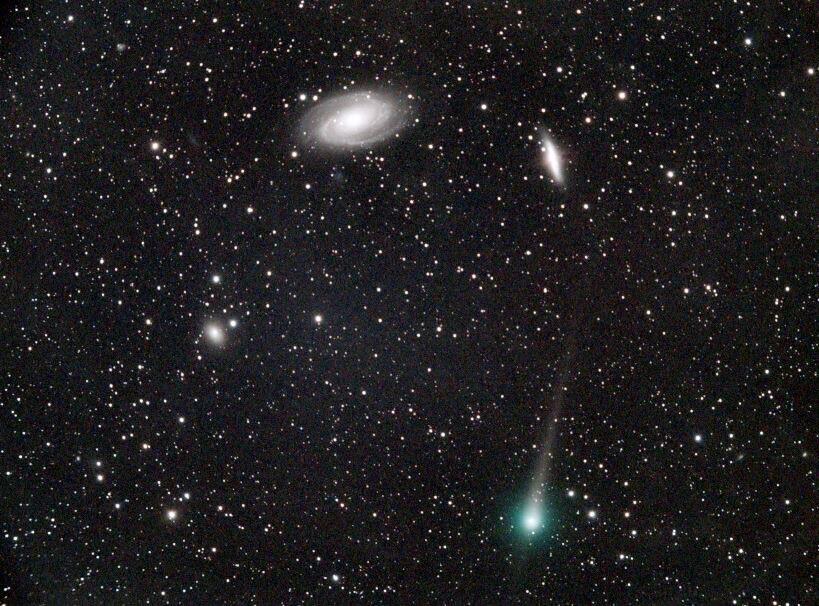
on SkyWatcher EQ6R Pro, tracked, unguided
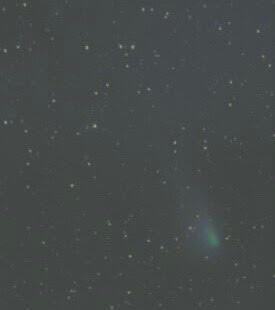
John Kulczycki captured an image of a waxing crescent moon on May 26th. John managed to capture crater details in this hand held exposure! It is interesting to compare this image to the one by Mike Nash also taken on May 26th using lucky imaging. It is a contrast of two techniques.
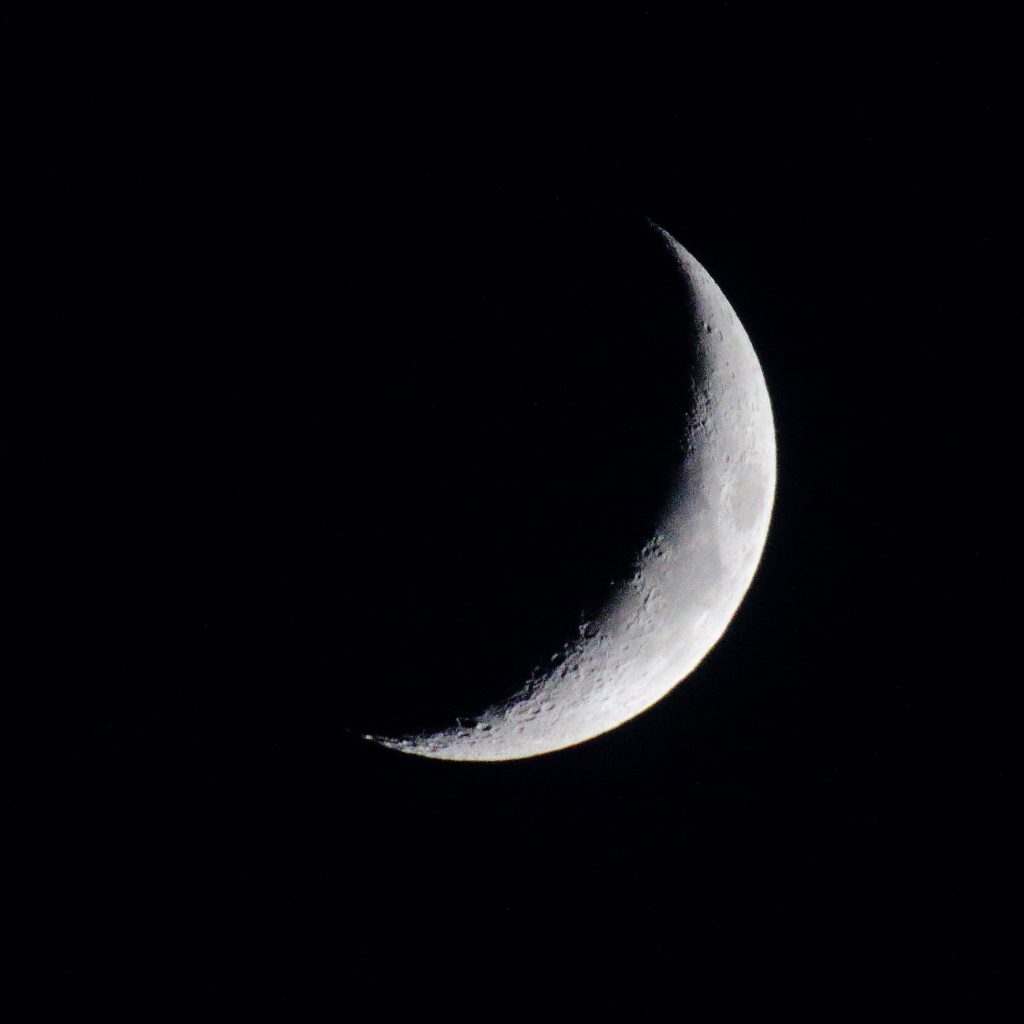
Polarizing filter Hand held, single shot Cropped from Raw
_______________________________________________
A beautiful sequence of Lunar images from Mike Nash
Victoria Centre RASCal Mike Nash has captured three beautiful images of the Moon on the nights of May 26th, 27th and 28th. It is fun to compare the evolution of shadows on the various lunar features from night to night. Check out the links below.
May 26th https://www.astrobin.com/full/f1q00j/0/?nc=WestCoastCannuck&real=&mod=
May 27th https://www.astrobin.com/full/2audif/0/?nc=WestCoastCannuck&real=&mod=
May 28th https://www.astrobin.com/full/228qys/0/?nc=WestCoastCannuck&real=&mod=
_______________________________________________
The UVic Open House Presentation for Wednesday May 27 at 7:30PM
For the Open House presentation this week (7:30pm, Wednesday, May 27), Jonathan Ranallo (3rd year astronomy undergrad at UVic) will be presenting the history of the Apollo program, including how the Mercury and Gemini missions were used to build up the technology and skills needed for Apollo. He will also provide an summary of the Russian efforts to get to the Moon. It’s a topic that really interests him, and he had done a lot of research on it over the years. He says he really enjoys doing a presentation on it.
The zoom guest link (with password embedded) is:
https://zoom.us/j/97173236268?pwd=V2hhYTAwVVY5cXl5eEFoOUxSYmZGdz09
Meeting ID: 971 7323 6268
Password: 554555
_______________________________________________
Weekly Observing Highlights thanks to Chris Purse
_______________________________________________
Images from Edmonton Centre relayed by Dave Robinson
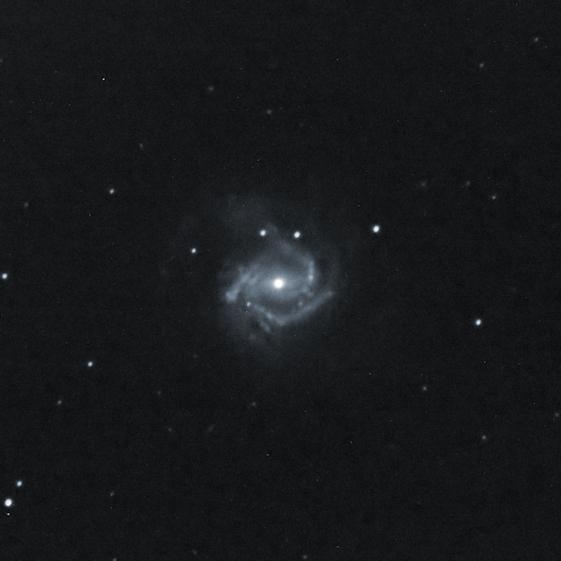
Above: Here is a very quick shot of M61 with SN (2020jfo discovered May 5th by Zwicky Transient Facility).
As it was my first time imaging with the refractor, I did not spend much time focusing these for better result.
Below: M13, taken with WO 132mm F7 using ASI0178, no corrector. PHD2, APT, Guide9.
DSS, Corel Photoshop pro, very little processing (noise and slight brightness and contrast)

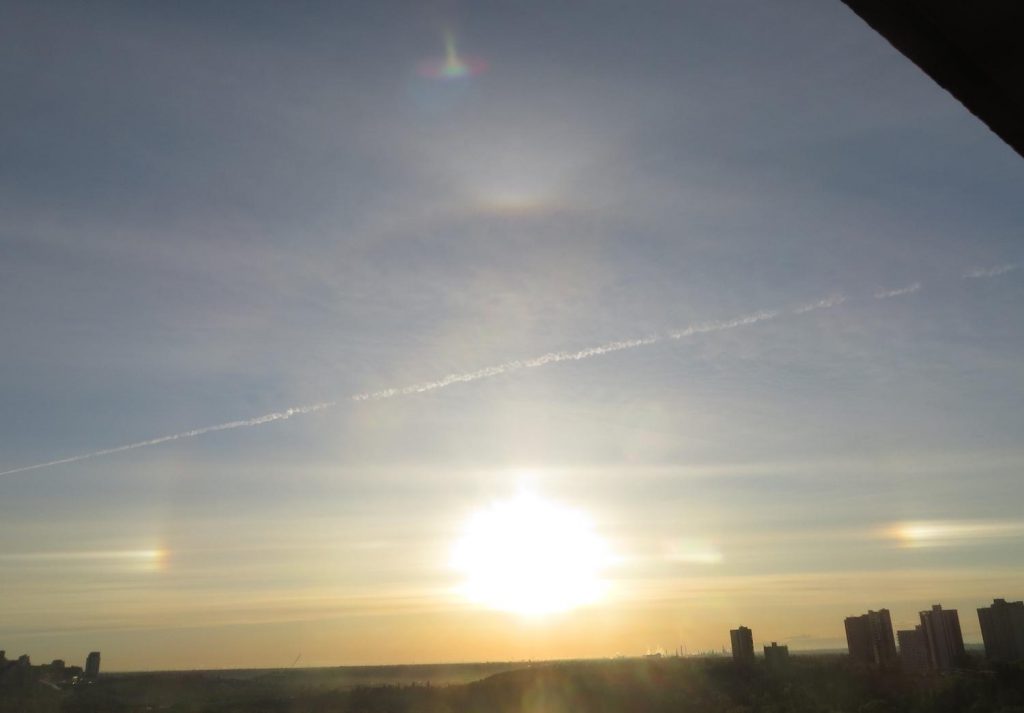
_______________________________________________
Web Offerings this week from RASC National
On Tuesday May 26th we’ll be joined once again by special guest Paul Owen for part two of the Intermediate Astrophotography section on Insider’s Guide to the Galaxy!
The session will run from 6:30 to 8:00 P.M. PDT and will cover how to best take those most sought-after deep sky object photos. If you missed part one, no worries, the session is up on the RASCANADA YouTube channel for you to get caught up! Intrigued? Registration is only a few clicks away:
https://zoom.us/webinar/register/4415851638387/WN_kGvVp9EvTaSReiWsPbqTig
On Wednesday May 27th we’ll be hosting a watch party for the historic launch of the first ever commercial space crew. This will be one for the ages. The Crew Dragon (constructed by SpaceX) will be carrying two Astronauts into orbit from American soil for the first time since the shuttle program at precisely 4:33 P.M. EDT. If you want to hang out, chat about space travel, and witness the humongous leaps and bounds of space exploration before your very eyes, feel free to stop by. The party will be hosted in the RASC Facebook group, so sign up now if you haven’t already!
https://www.facebook.com/groups/2393127970/
_______________________________________________
Interesting Interview with Martin Rees recommended by Jim Hesser
Fraser Cain intervews the Astronomer Royal Martin Rees on the Future of Humanity in this YouTube video.
https://www.youtube.com/channel/UCRhy7D-4CSu2Tua02pgpEjQ
_______________________________________________
UVic Wednesday Evening Zoom Sessions: An Invitation from Karun
Karun Thanjavur from UVic Astronomy has invited you to an interesting series of Zoom Webinars which occur every Wednesday evening at 7:30PM.
Zoom joining details:
Karun Thanjavur is inviting you to a scheduled Zoom meeting.
Topic: Summer 2020: Observatory Open House
Time: May 13, 2020 07:30 PM Pacific Time (US and Canada)
Every week on Wed, until Aug 26, 2020, 16 occurrence(s)
May 27, 2020 07:30 PM
Jun 3, 2020 07:30 PM
Jun 10, 2020 07:30 PM
Jun 17, 2020 07:30 PM
Jun 24, 2020 07:30 PM
Jul 1, 2020 07:30 PM
Jul 8, 2020 07:30 PM
Jul 15, 2020 07:30 PM
Jul 22, 2020 07:30 PM
Jul 29, 2020 07:30 PM
Aug 5, 2020 07:30 PM
Aug 12, 2020 07:30 PM
Aug 19, 2020 07:30 PM
Aug 26, 2020 07:30 PM
Please download and import the following iCalendar (.ics) files to your calendar system.
Weekly: https://zoom.us/meeting/tJMscOqqrT0oHNzGJc9UK2uWYY_R-1Zb8xUK/ics?icsToken=98tyKuCvrzwpGNeTsh-PRowEBY_Cb-rztiFBgo1HuzXmWhV4MBbBD9t9AP8uKtqI
Join Zoom Meeting
https://zoom.us/j/97173236268?pwd=V2hhYTAwVVY5cXl5eEFoOUxSYmZGdz09
Meeting ID: 971 7323 6268
Password: 554555
_______________________________________________
Mercury and Venus put on an evening show
John McDonald from his lofty nest and David Lee amongst the forest trees captured this 1.9 degree approach of Mercury and Venus on May 22nd.
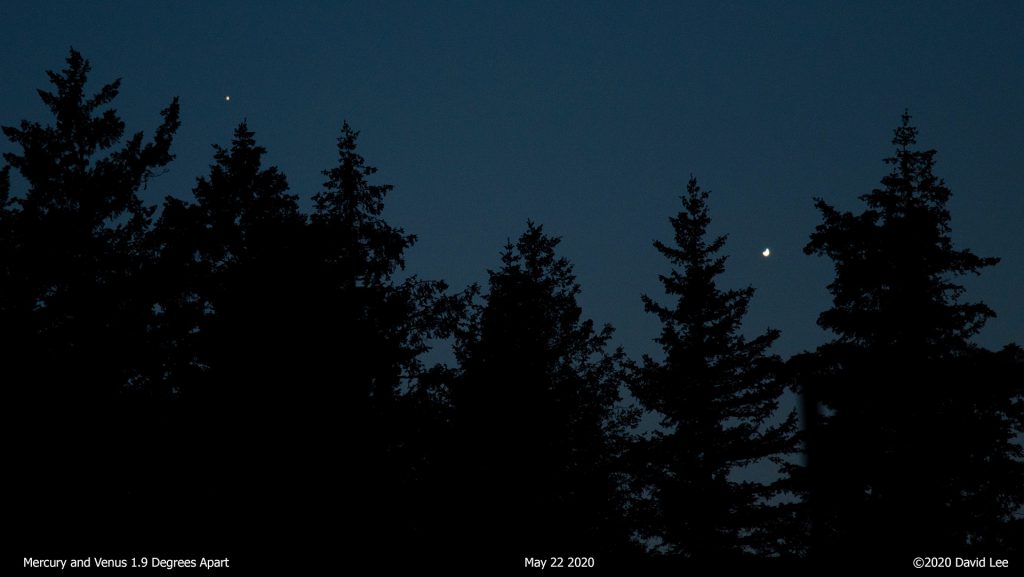
Camera: Nikon Z with FTZ adapter Lens: Nikkor 300/4 AFS with TC 1.4x Convertor (effective 420mm)
Sensor ISO: 400 Exposure: 1/15 second at f/6.3 Processing: Adobe Photoshop CC 2020
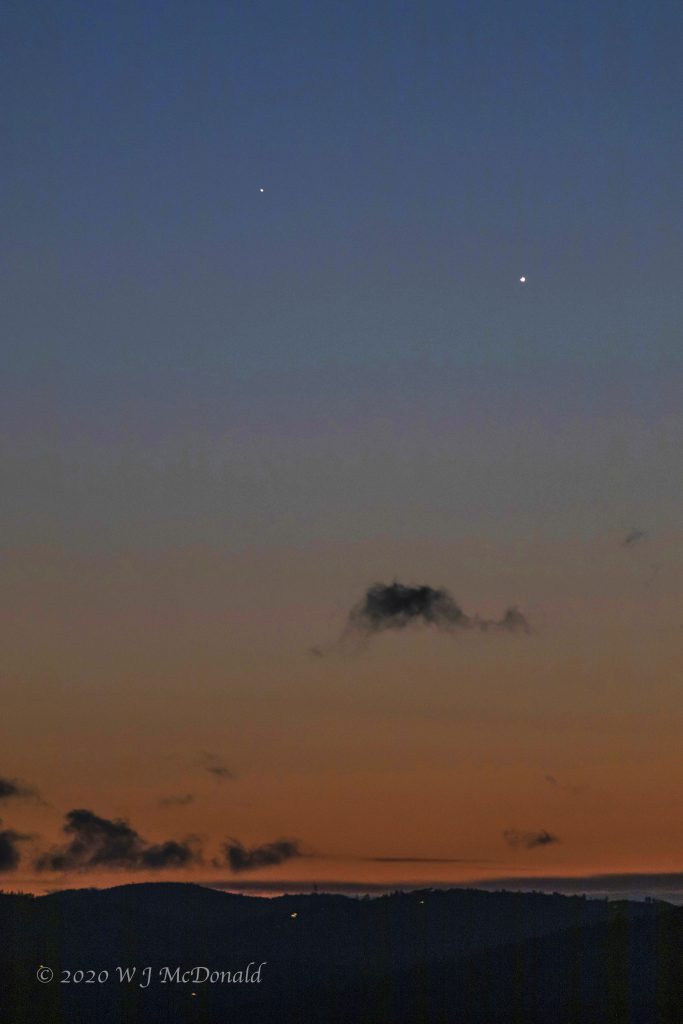
______________________________________________
And Then there were 15 Crescents! by John McDonald
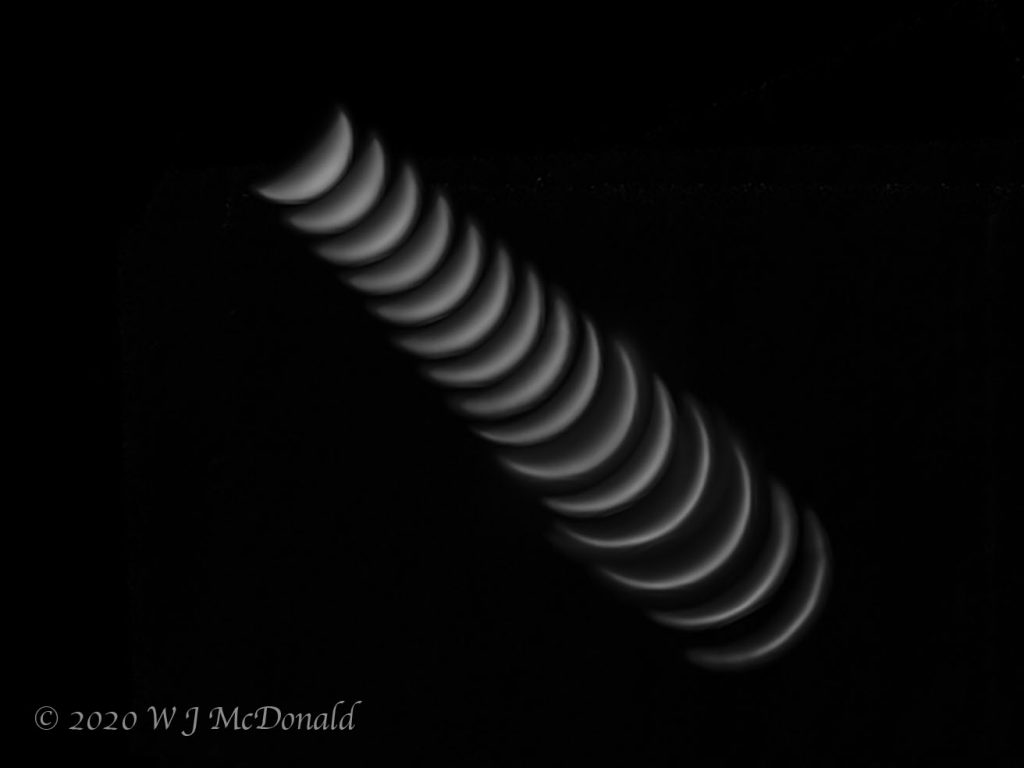
_______________________________________________
And From the Morning Sky: Images from David Lee
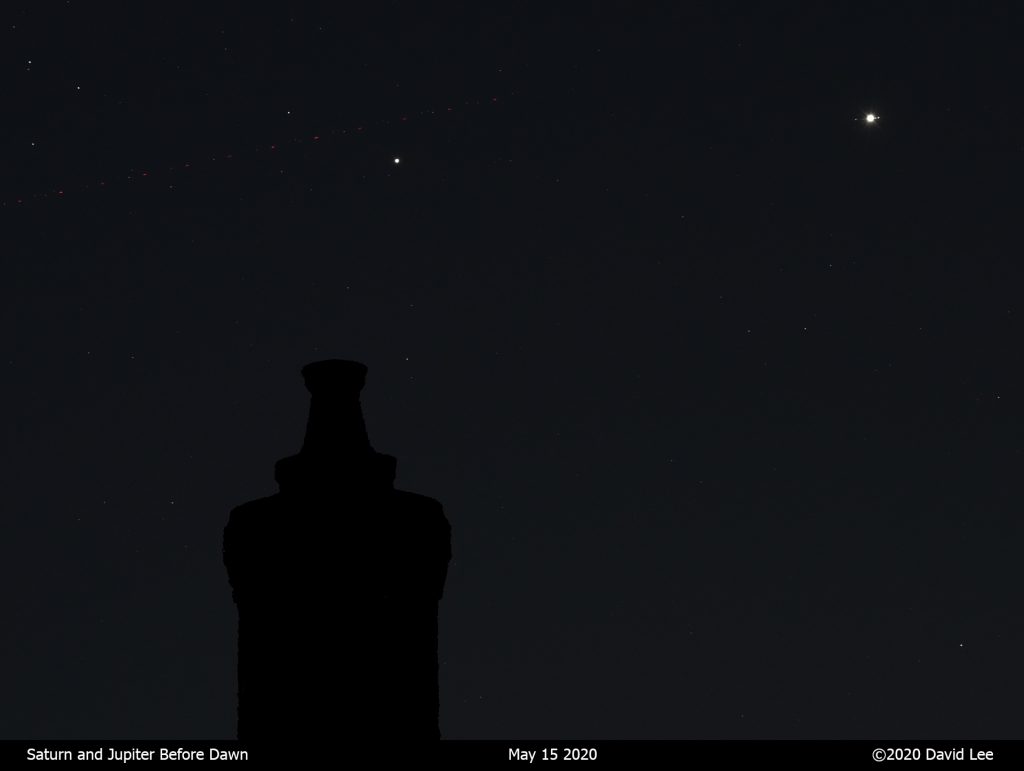
Camera: Nikon Z6 Lens: Nikkor Z 24-70/4 set at 70 Sensor ISO: 800
Exposure: 20 seconds at f/8 Tracking: Sky Watcher Star Adventurer
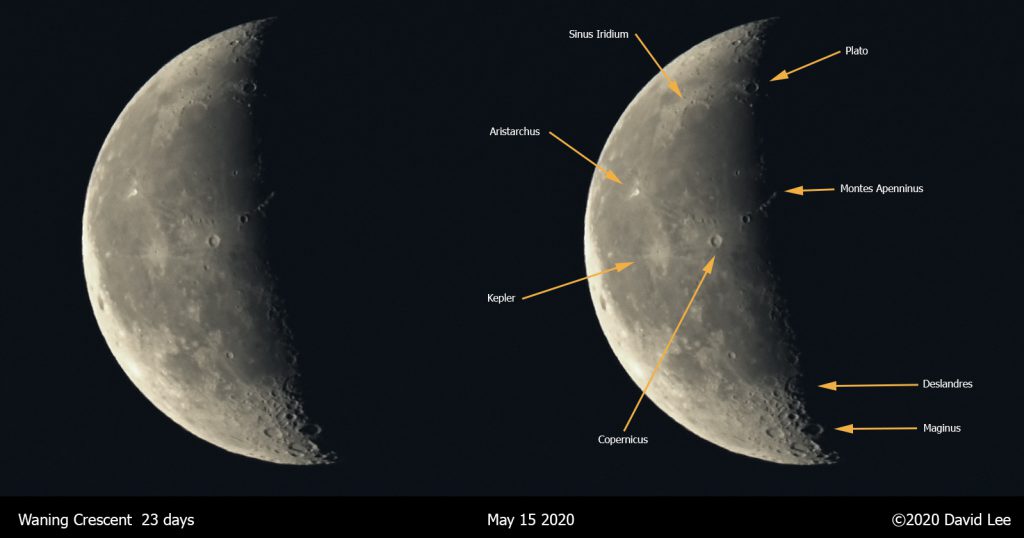
_______________________________________________
Weekly Observing Highlights by Chris Purse
_______________________________________________
Planet Nein … Dr. Samatha Lawler relayed by Jim Hesser
An interesting article on Dr. Samatha Lawler who has presented her argument at the Victoria Centre Monthly Meetings.
_______________________________________________
And then there were Eleven: The Venus Series Continues by John McDonald
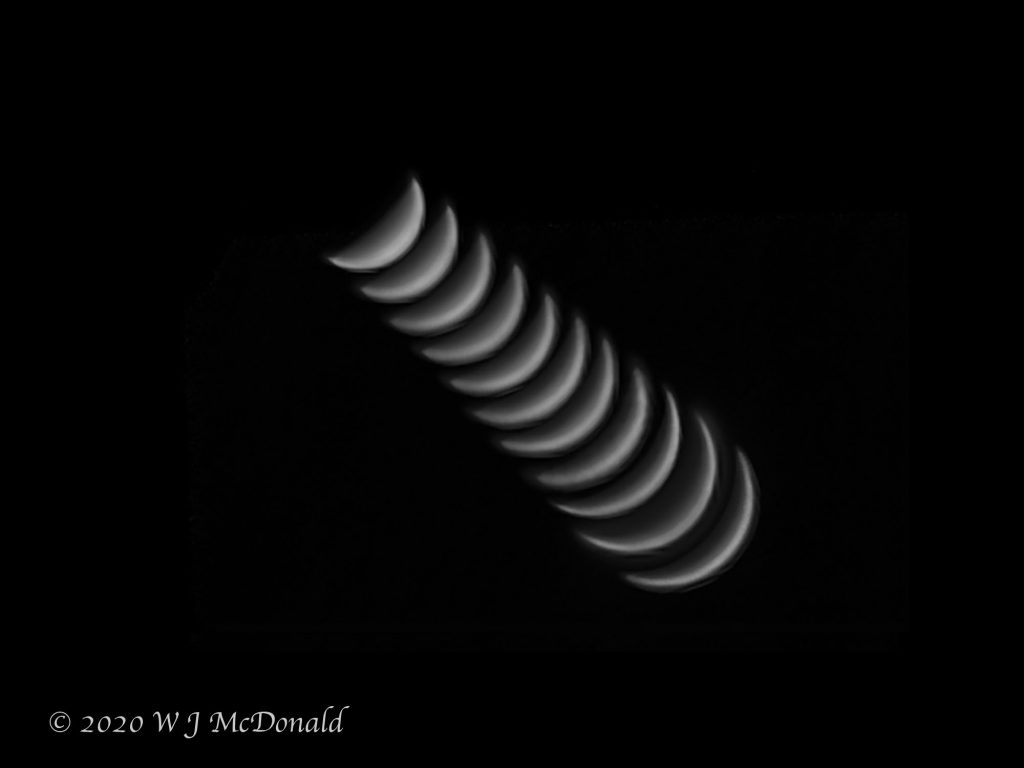
_______________________________________________
Contributions from Edmonton Centre relayed by Dave Robinson
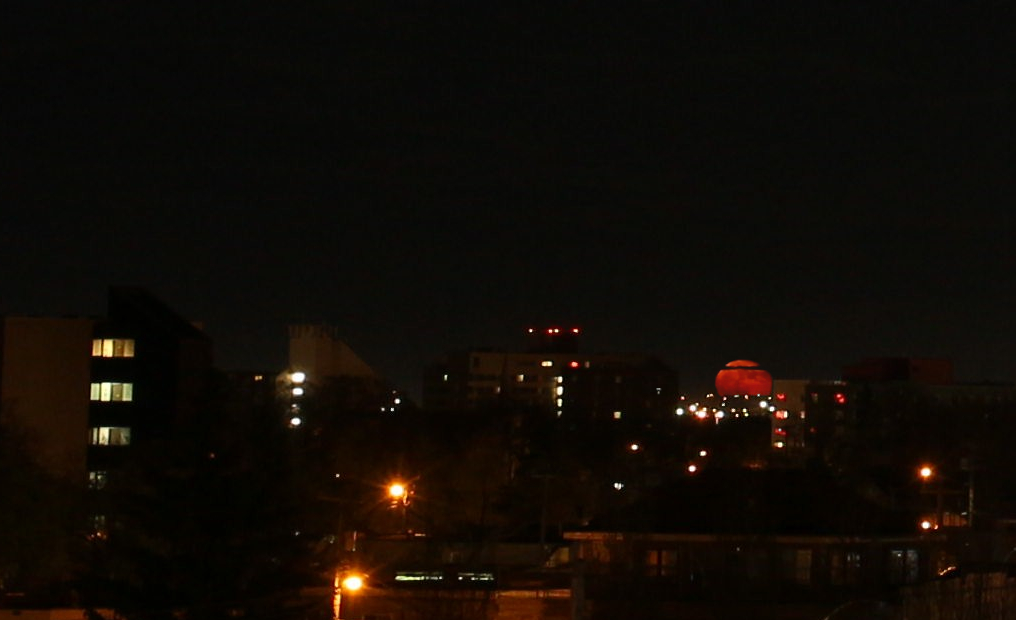
The wide shot is from a video with a wide angle zoom at about 22 mm
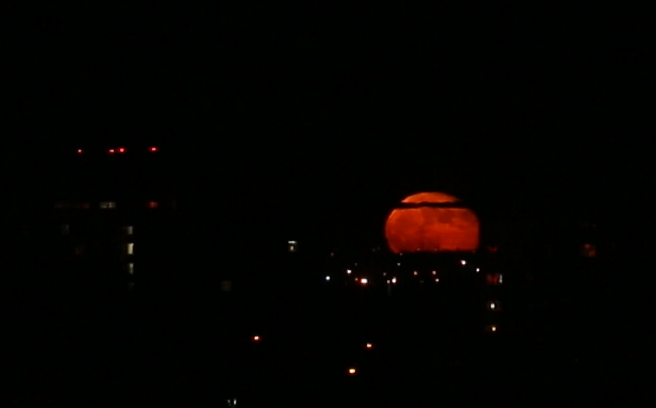
_______________________________________________
A New Type of Celestial Body Has Been Discovered!

They appear to come from a mixture of substances which, when brought together and somewhat forcefully fused together, will form what is called a protocookie. When the environment is hot enough, The protocookie will begin ingredient fusion, and expand to become a cookie. When they are newly formed, they glow in the infrared spectrum, but as they age and gradually tend toward their vacuum temperature, they emit microwave and later radio waves.
The cookies pictured above are rare supergiant cookies, but more common cookies are giant, sub giant, main sequence cookies, and the most abundant type of cookie, dwarf cookies. Unlike stars, supergiant cookies tend to live the longest. Dwarf cookies usually fall into black holes within seconds. Main sequence cookies about a minute. Supergiant cookies can take up to an hour to be fully destroyed by a black hole. Sometimes a black hole will fail to consume an entire supergiant cookie and continues it in about a day.
No cookie has ever been seen to survive more than two days, but it is hypothesized that any cookie can survive for months before taking their slower fate, in which their colour changes to blue and they decay into elementary bits. When this phase happens, they never fall into black holes. Anyway, we will keep studying these mysterious objects in the hope that it will provide us will useful scientific information*
*it won’t
Clear skies, Nathan
_______________________________________________
This Weeks Viewing Highlights by Chris Purse
_______________________________________________
Stunning Lunar Images by Mike Nash
I encourage you to click on the following links to enjoy the beautiful lunar images obtained by Mike Nash using lucky imaging with a SkyWatcher ED 120mm Refractor and ZWO ASI 183MM camera.
Taken April 27th 2020: https://photos.smugmug.com/photos/i-w8mZkgq/0/cdb27caf/O/i-w8mZkgq.jpg
Taken April 29th 2020: https://photos.smugmug.com/photos/i-g6LJmQw/0/1a1a19de/O/i-g6LJmQw.jpg
Mosaic Taken April 29th 2020 using 1.5X Antares Barlow: https://photos.smugmug.com/photos/i-BGch2Gv/0/872d740c/O/i-BGch2Gv.jpg
Taken November 30 2018 Imaging lens:Minolta AF 400mm F4.5 HS APO G
Imaging camera:Sony A77ii Focal reducers:Kenko 3X Teleplus Pro , Minolta 1.4X Teleconverter Software:Adobe lightroom 6 , Autostakkert 3.0 14 , Microsoft ICE 2 , PIPP X64 v2.5.9: https://www.astrobin.com/full/h2tcqz/0/?nc=WestCoastCannuck&real=&mod=
_______________________________________________
Some More Edmonton Centre Images courtesy of Dave Robinson
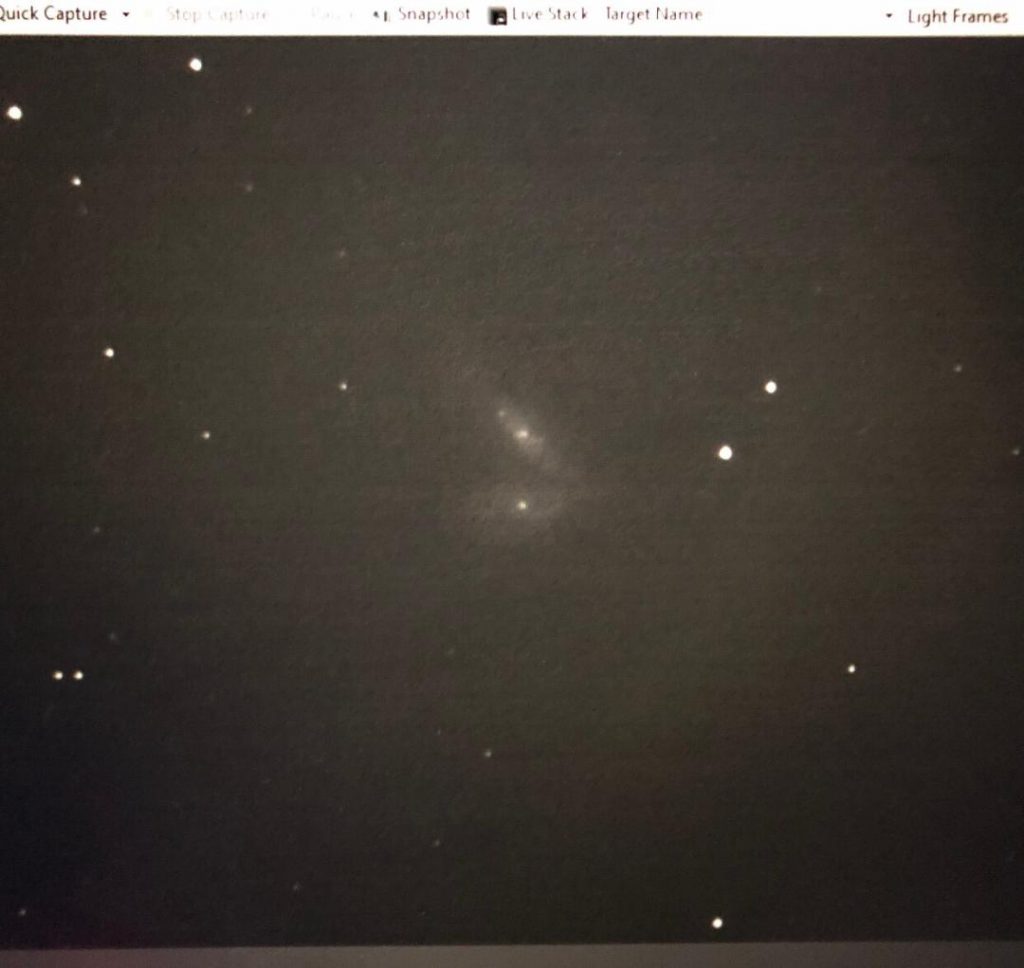
Supernova SN2020fqv in NGC4568 Siamese Twins using AStrophysics AT8RC with ZWOASI74MM camera
Single unprocessed photo. This Supernova was discovered on March 31 2020 by Zwicky Transient Facility
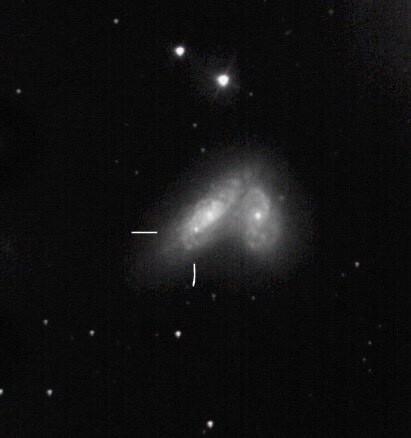
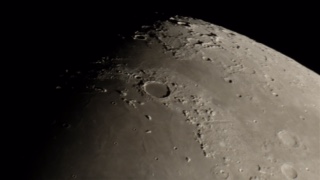
Above: Wide shot
Below: Closeup of Plato notice crater lets in the floor of Plato
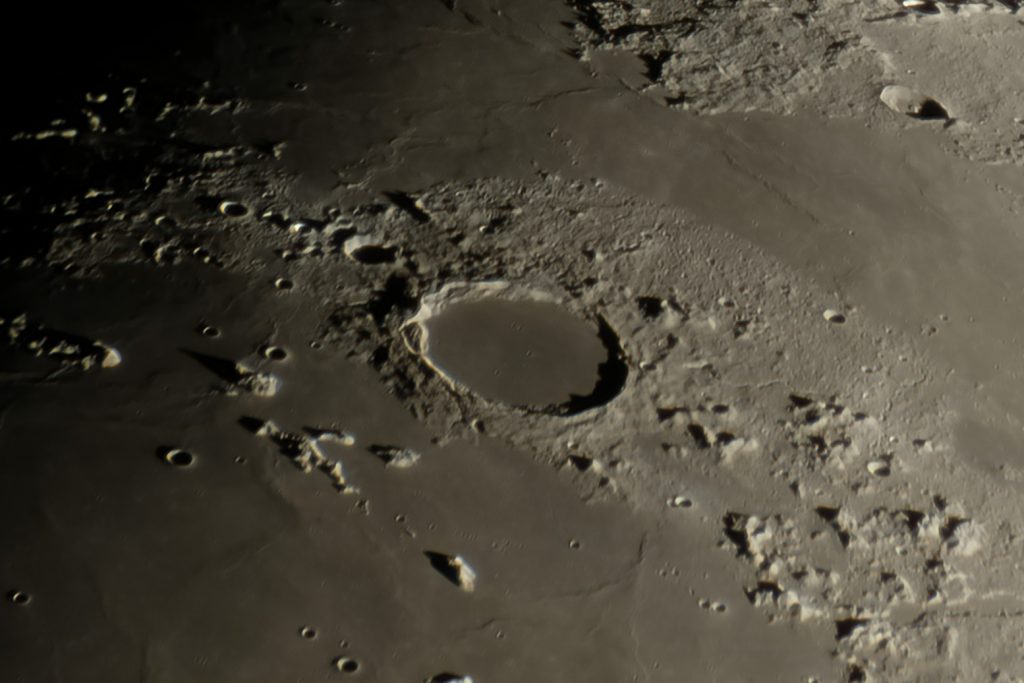
_______________________________________________
Randy’s Red Dot Finder Gadget for his Camera
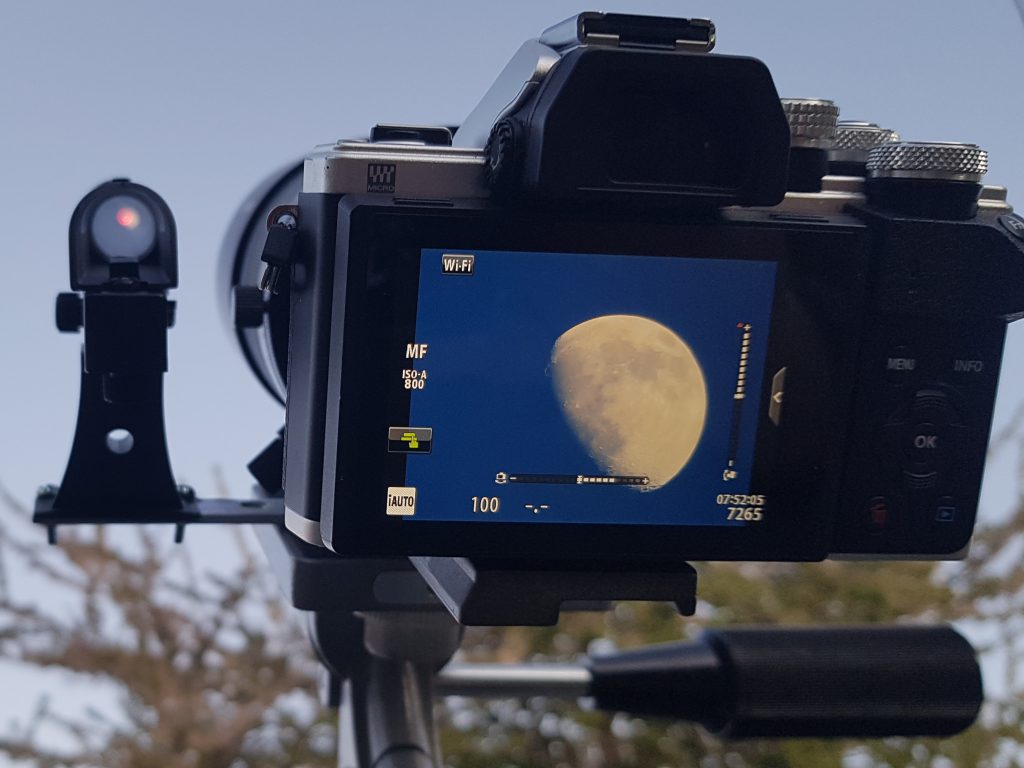
_______________________________________________
More Information on Starlink Constellation from Jim Hesser
Last Monday Jim Hesser attended an online meeting regarding the impact of the Starlink Constellation on Optical and Infrared Astronomy. Jim shared a link that enables one to view the slides presented at the meeting. It was at this meeting the Elon Musk shared details of VisorSat that may help reduce the brightness of the Starlink Satellites. https://www.nationalacademies.org/event/04-27-2020/decadal-survey-on-astronomy-and-astrophysics-2020-astro2020-light-pollution-rfi-meeting
Jim also recommends Gwendolyn Eadie’s outstanding Milky Way talk on last week’s Cosmos from your Couch? https://www.youtube.com/watch?v=6zix99wn6f0
_______________________________________________
This Weeks Viewing Highlights provided by Chris Purse
_______________________________________________
A taller and slimmer Venus: A series by John McDonald

_______________________________________________
More Edmonton Centre Imagery relayed by Dave Robinson

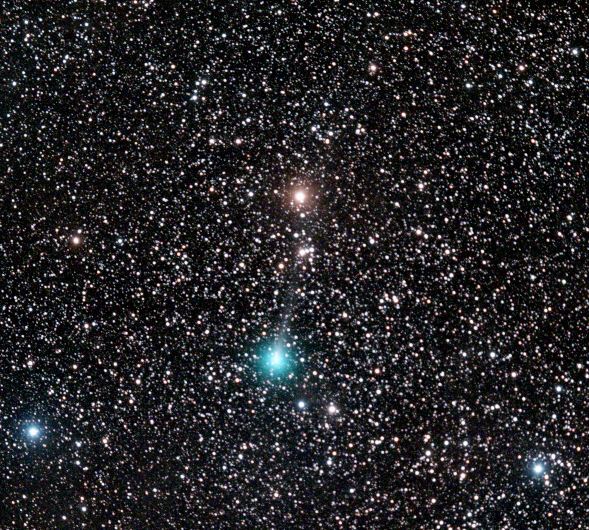
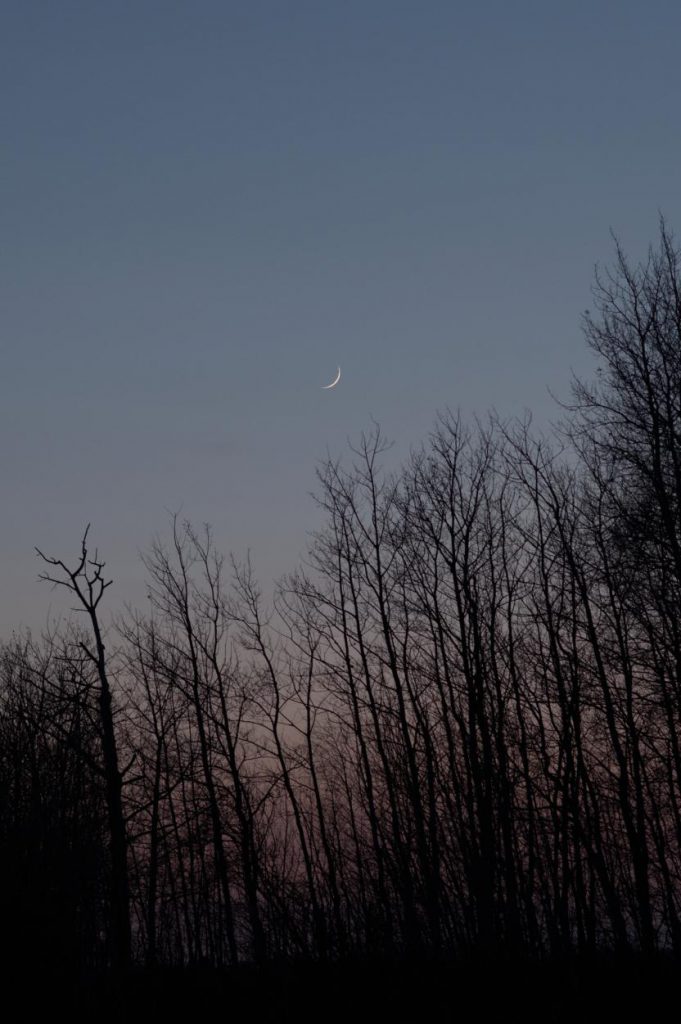
Thin crescent moon with trees by Denis Boucher on April 24 near Lake Wabamun 1 hr NW of Edmonton
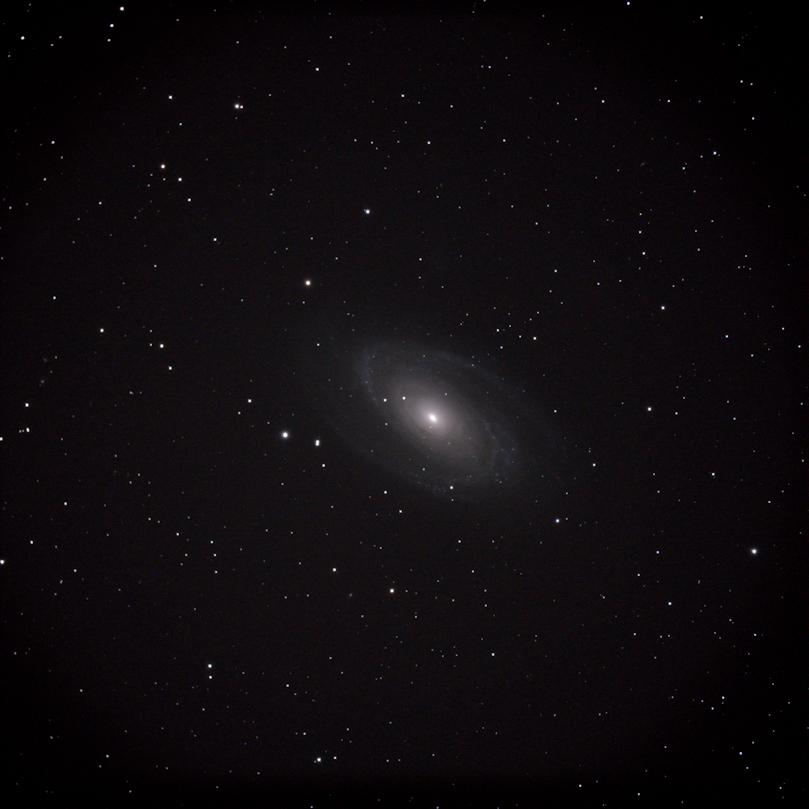
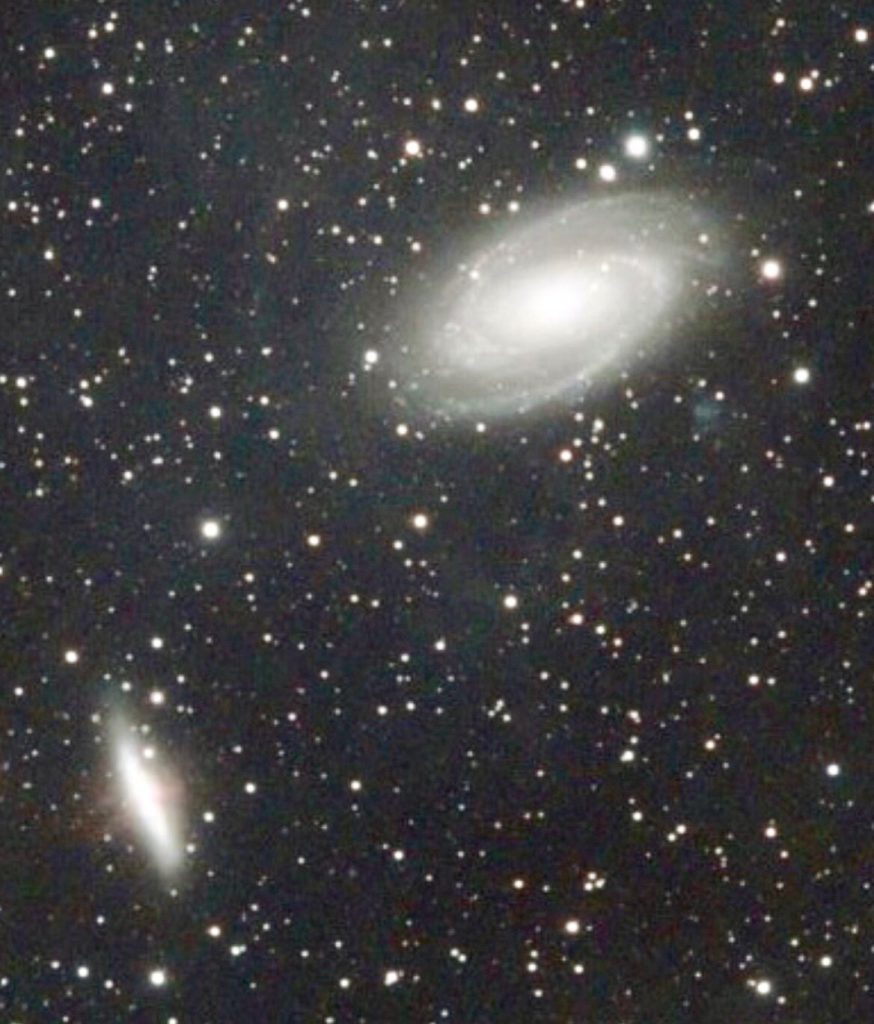
_______________________________________________
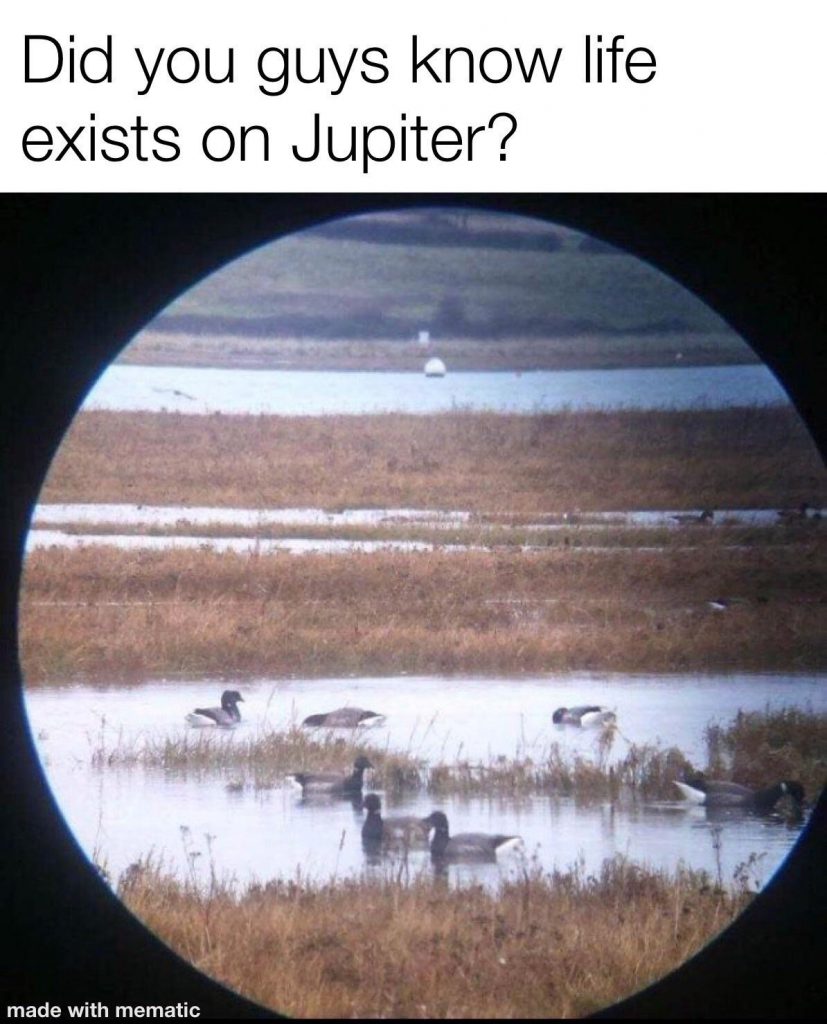
_______________________________________________
This Weeks Observing Links provided by Chris Purse
_______________________________________________
Stunning Images of M81 and M82 from Garry Sedun using his 20 Inch Newtonian
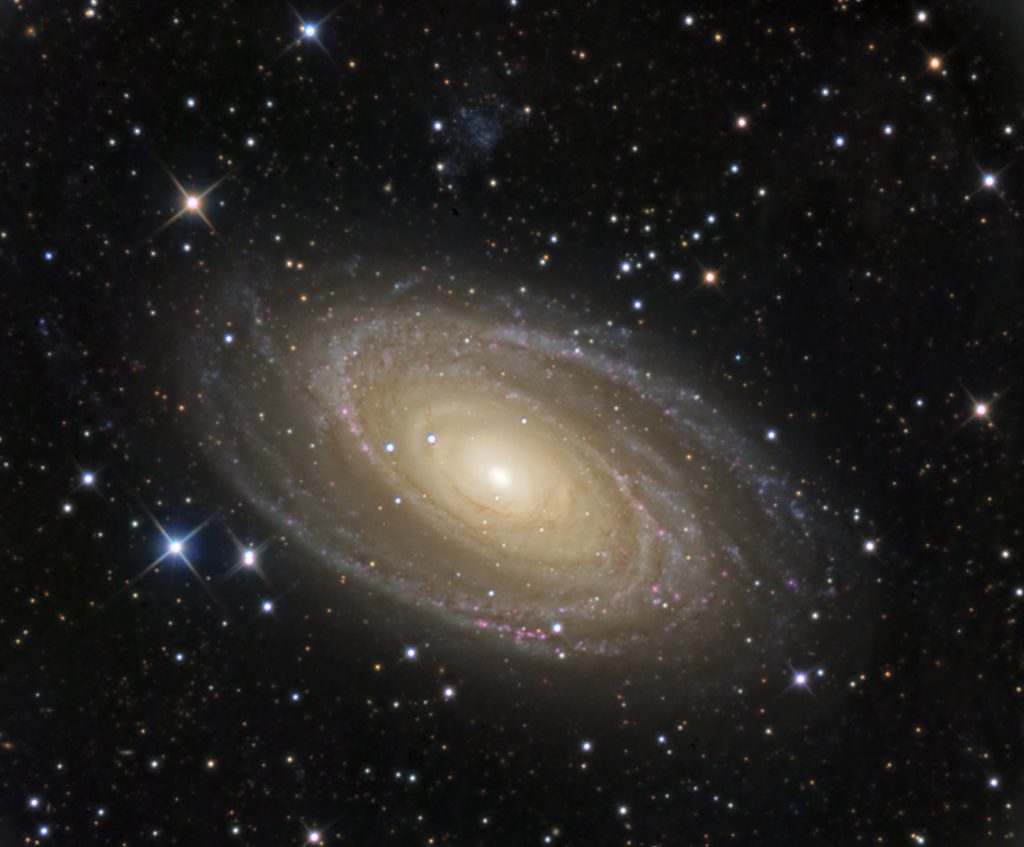
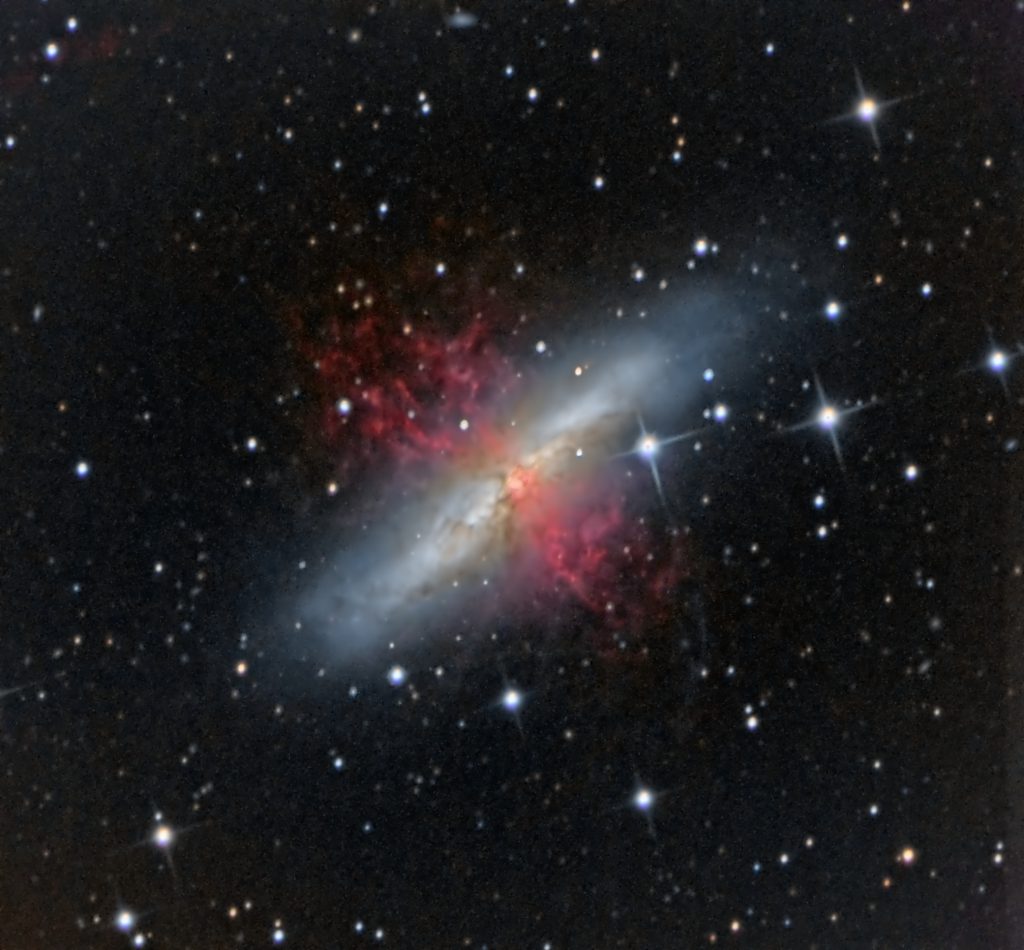
_______________________________________________
More Edmonton Centre Images: by the kindness of Dave Robinson
The Peach Moon below, was taken by Alister Ling who writes: Luca and I went to the NW Yellowhead and Henday cloverleaf to catch this rise last night.
Lots of atmospheric turbulence and red flash refraction effects! The squashed shape due to refraction and the red flash at the bottom of the moon are obvious.


Arnold notes: “Celestron RASA8 on SkyWatcher EQ6R-Pro; ZWO ASI294MC Pro (cooled one-shot colour camera); processed in DeepSkyStacker and PixInsight.30 subs at 60sec each
The nebula was discovered on 5 September 1784 by Sir William Herschel. It consists of the following components:
Cygnus Loop (Veil Nebula)
Western Veil (NGC 6960, Caldwell 34) is the western segment..
The foreground bright star is 52 Cygni.
Central Veil (NGC 6974 and 6979) and Pickering’s Triangle;
Eastern Veil (NGC6992 & 6995, IC 1340, Caldwell 33)”
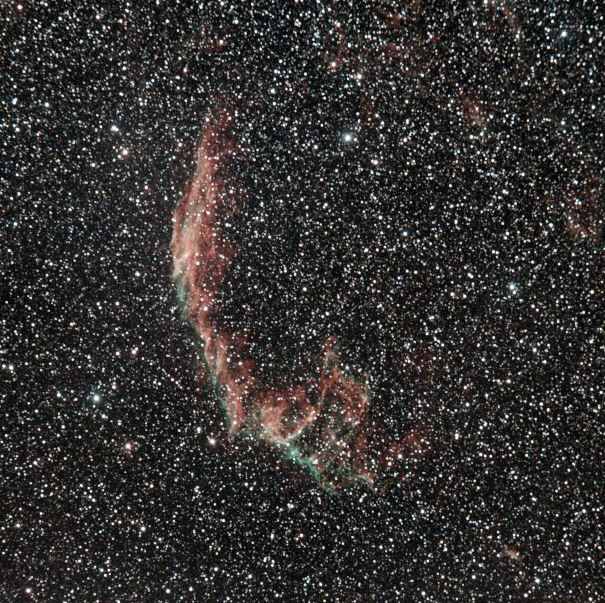
_______________________________________________
Don’t miss Mallory Thorpe’s “Clash of Galaxies”: Recommended by Jim Hesser
Mallory Thorpe from UVic delivered a most interesting, entertaining and informative presentation entitled “Clash of Galaxies” which is found between 57 minutes and 1 hour 22 minutes on the following YouTube link: https://www.youtube.com/watch?v=7x7ur25qkrQ This “Nerd Night” feature that was recently streamed on Zoom. Check it out.
_______________________________________________
Sunset over the Sea of Tranquility: Sketches by Randy Enkin

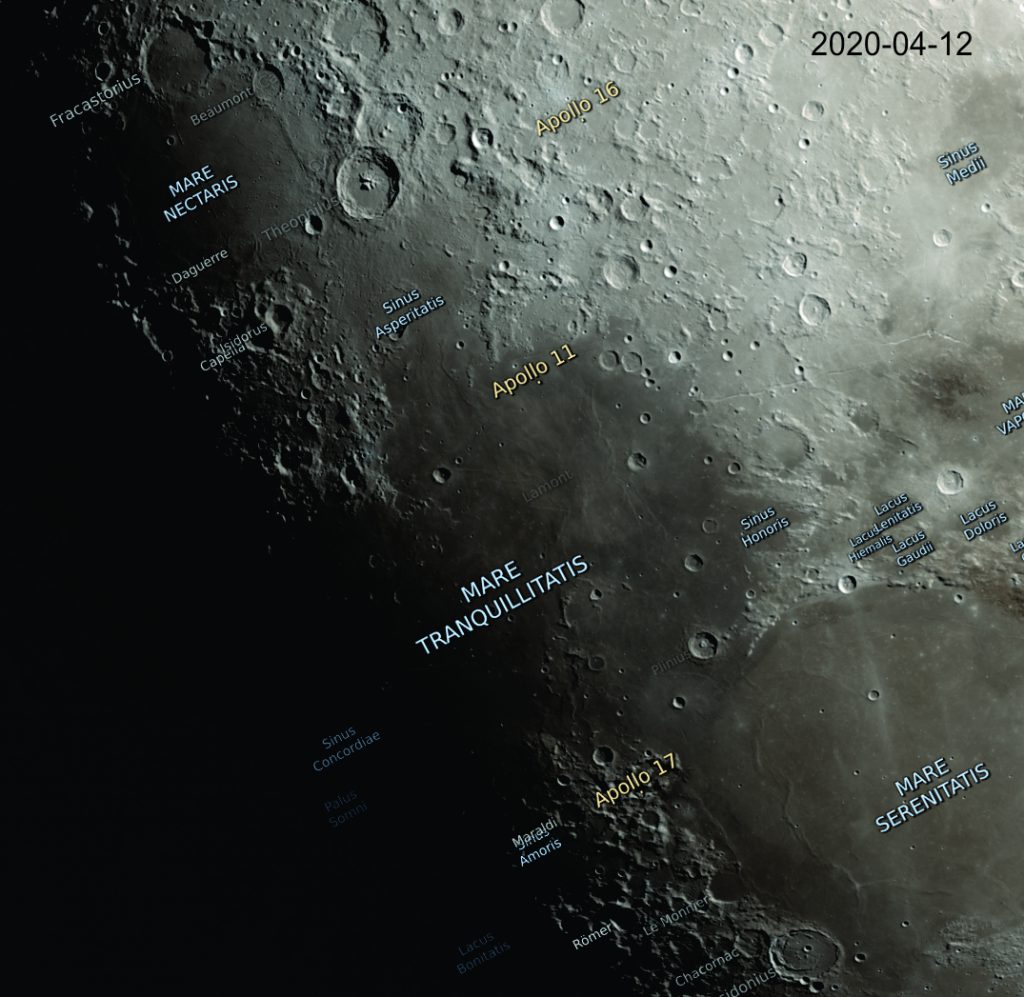
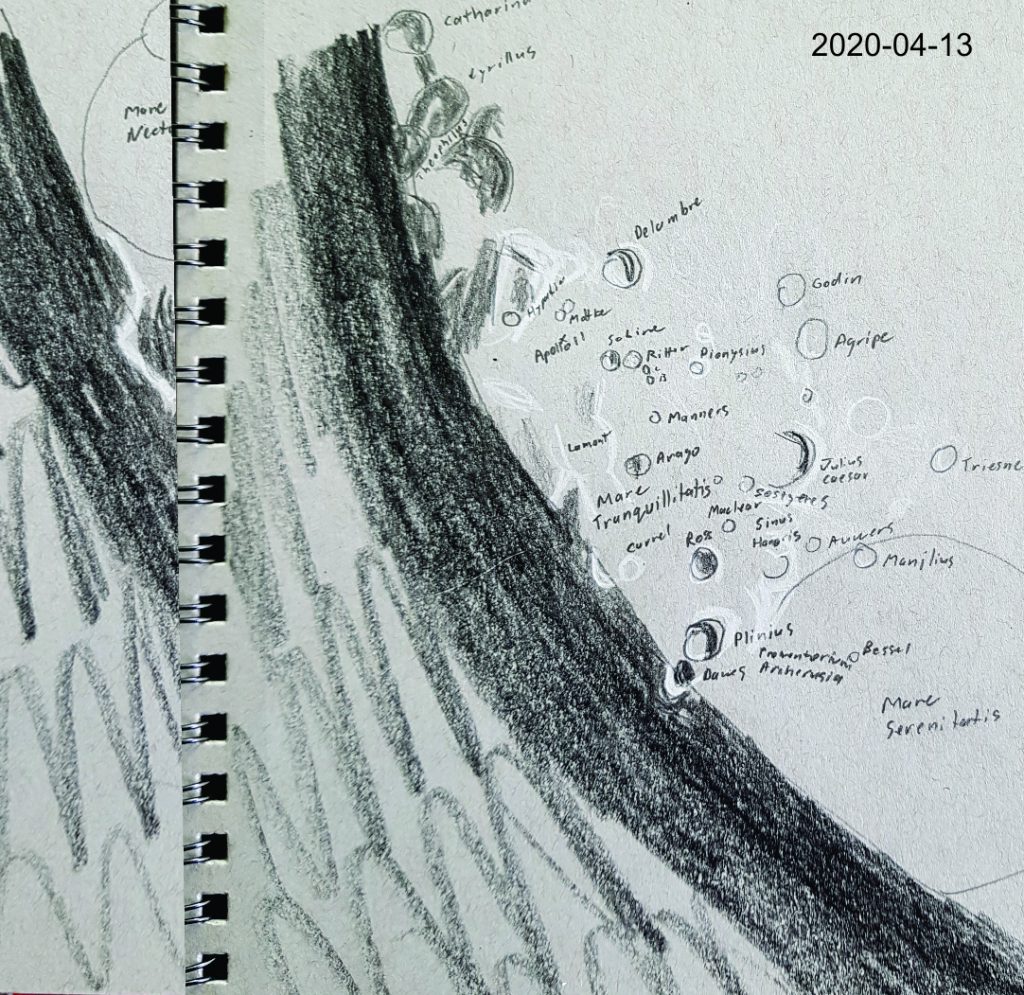
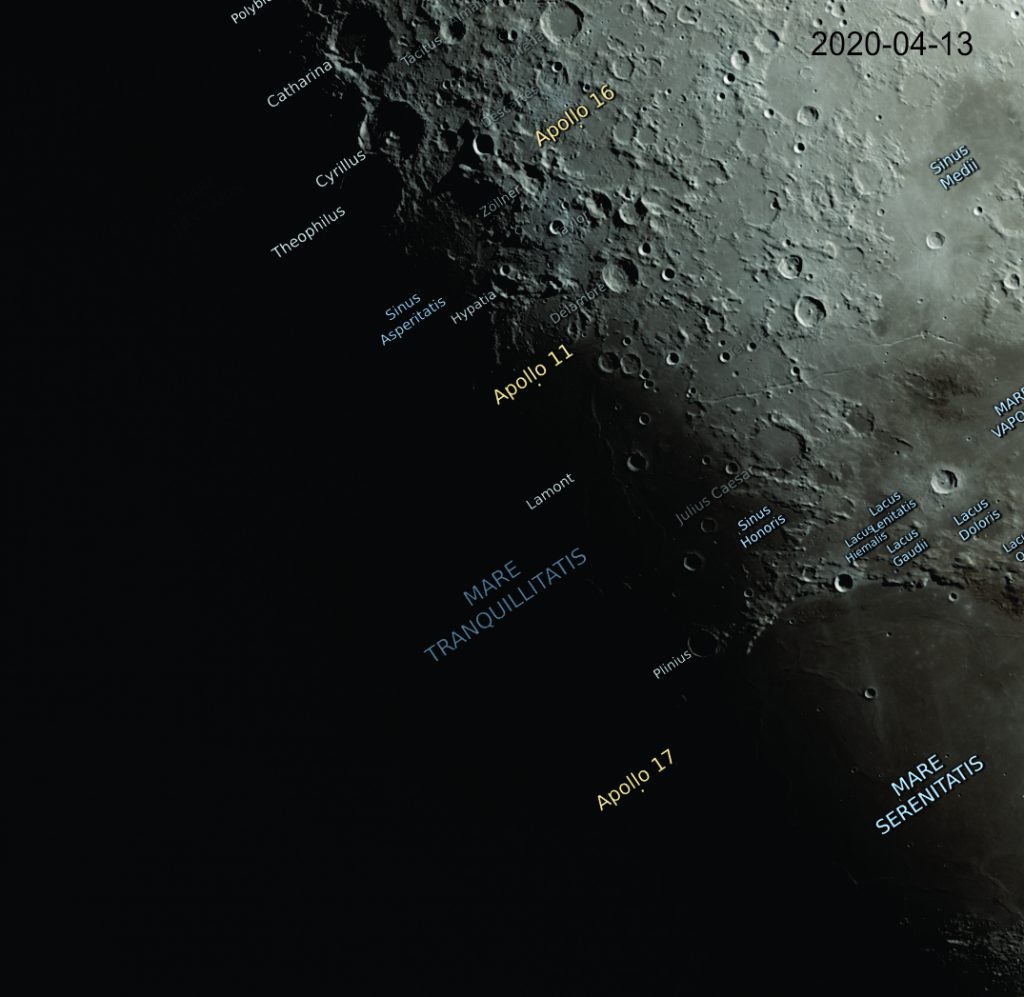
_______________________________________________
Early Morning Parade of the Planets by David Lee
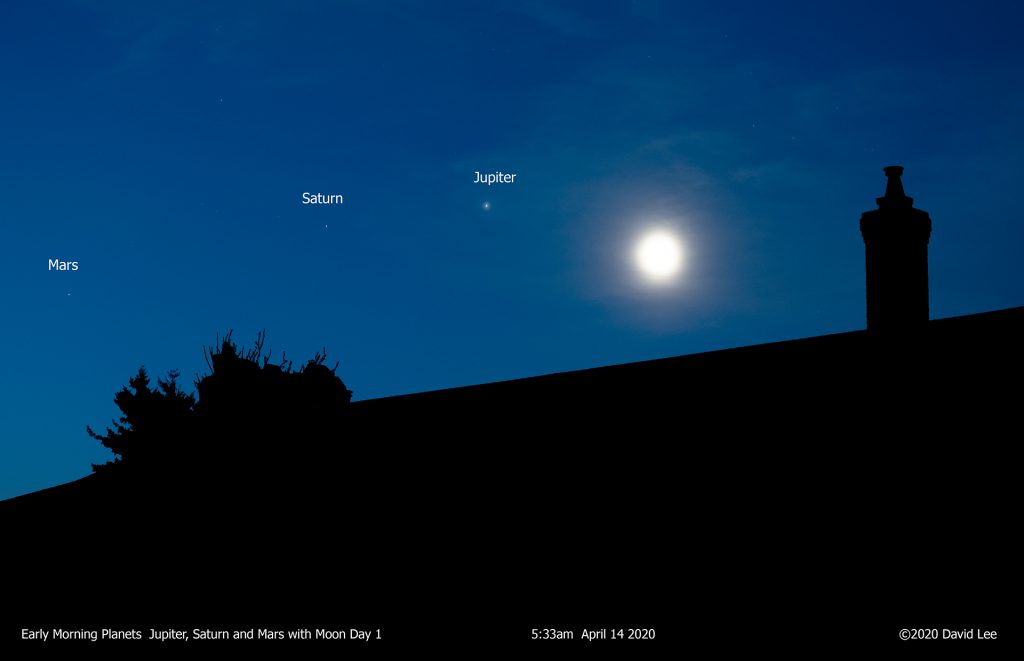
Camera: Nikon Z6 Lens: Nikkor Z 24-70/4 set at 50mm Sensor ISO: 800 Exposure: 2 seconds at f/5
Processing: Adobe Photoshop CC 2020
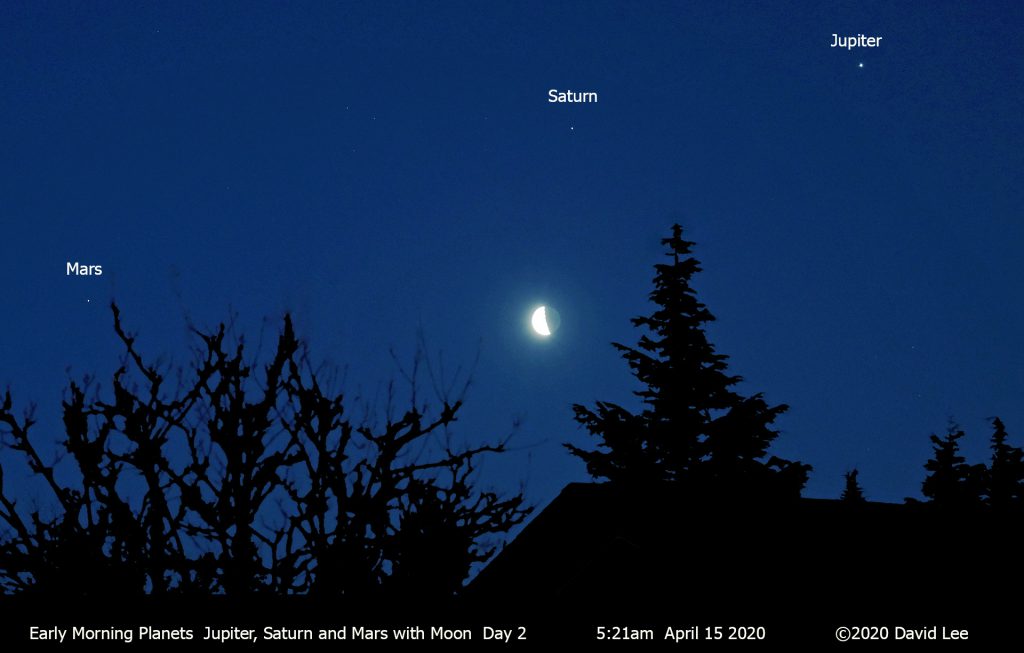
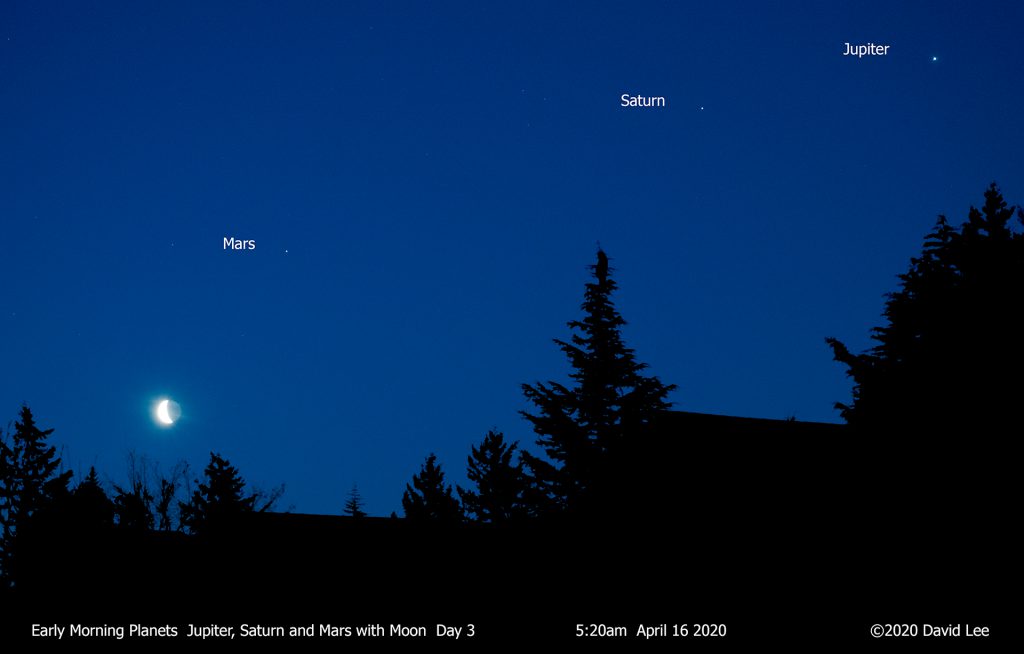
Camera: Nikon Z6 Lens: Nikkor Z 24-70/4 set at 68mm (cropped) Sensor ISO: 800 Exposure: 1 second at f/5
_______________________________________________
This Weeks Observing Links provided by Chris Purse
_______________________________________________
Montage of the Quarter Moon by John McDonald
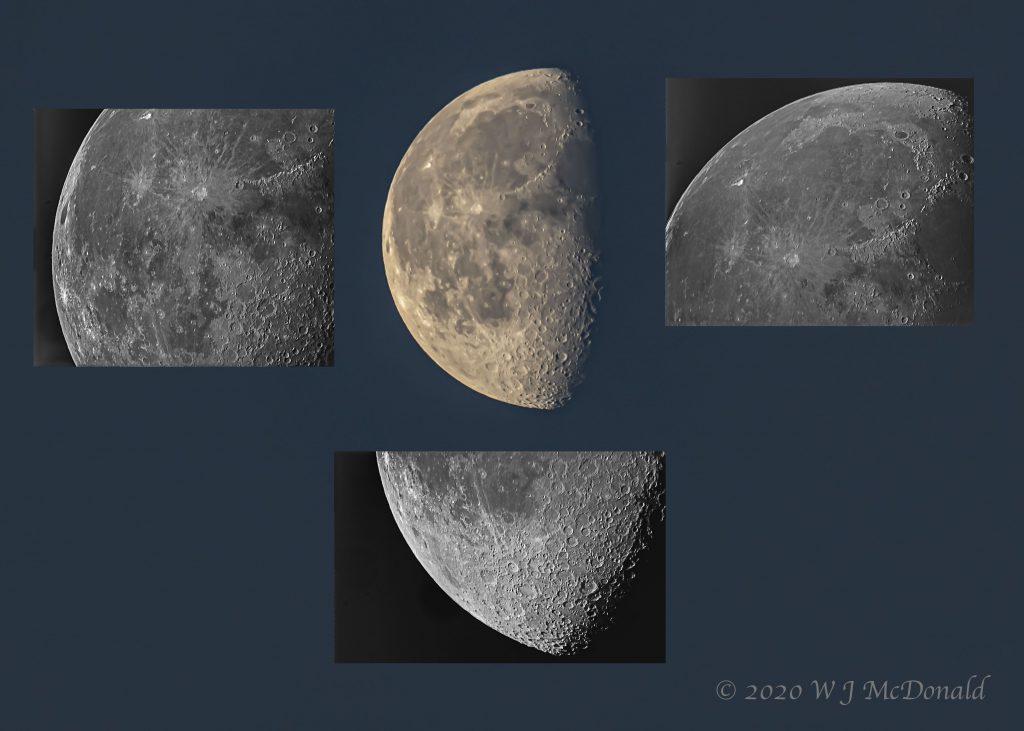
_______________________________________________
Weekly Viewing Highlights from Chris Purse
Chris shared these observing highlight links for the week.
https://skynews.ca/this-weeks-sky-april-6-to-12/
https://skyandtelescope.org/observing/this-weeks-sky-at-a-glance-april-3-11-2/
_______________________________________________
Rod and Glynis Have Halos
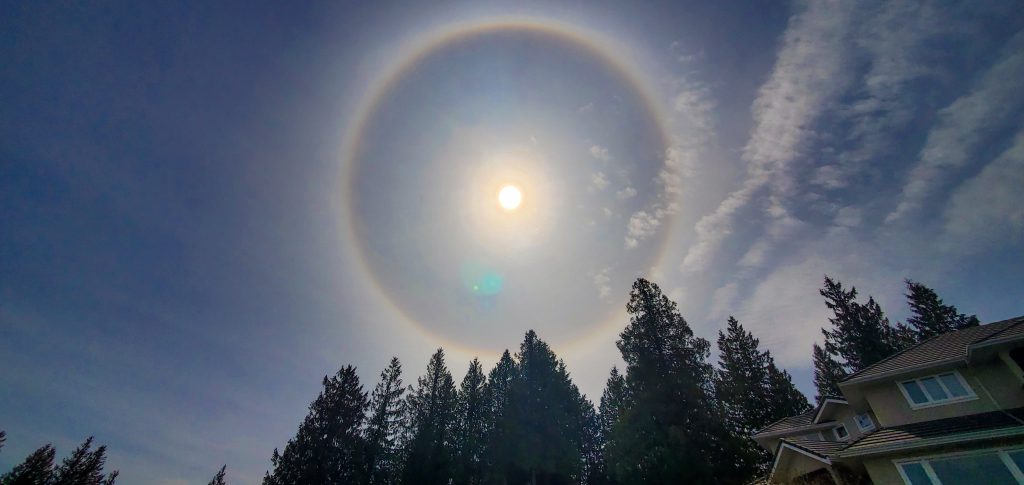
_______________________________________________
A nice Moon shot by John McDonald
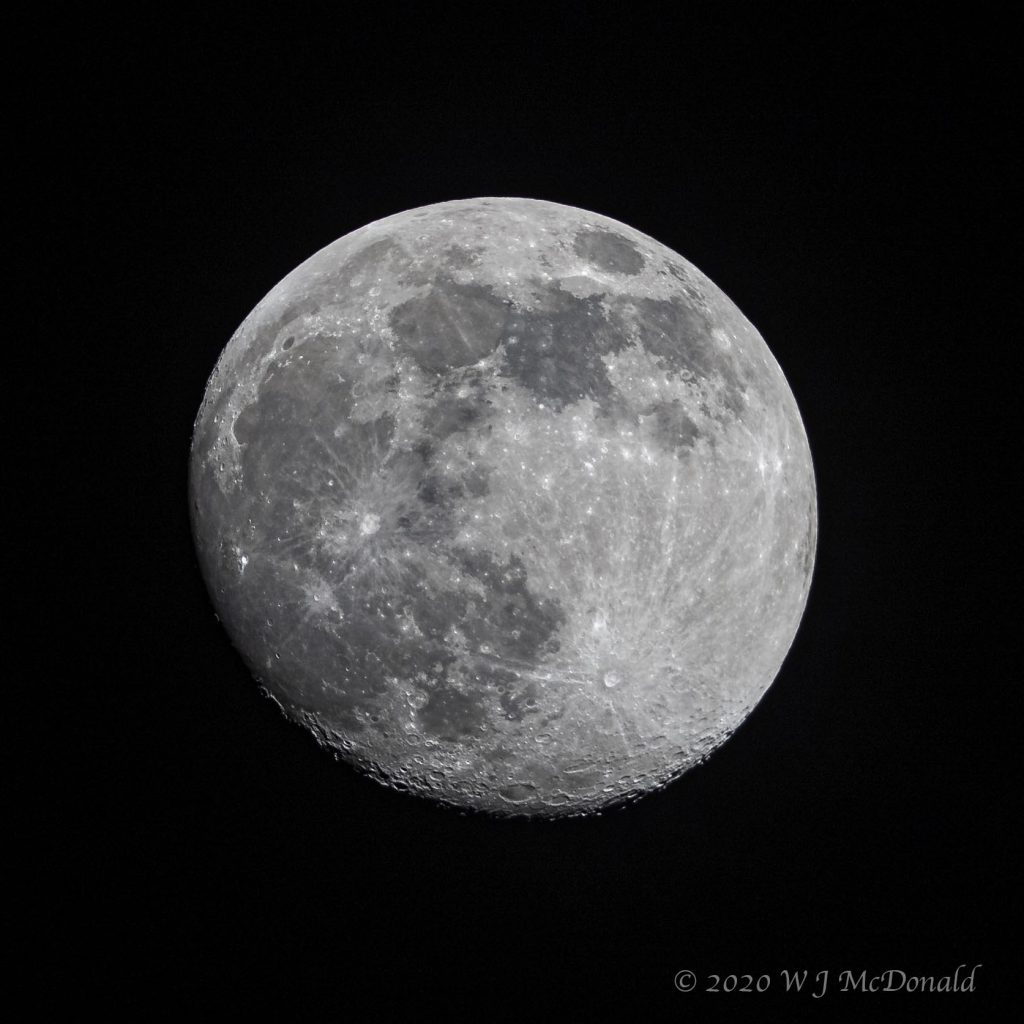
_______________________________________________
The Conjunction of Venus and the Pleiades
The rendezvous of Venus with the Pleiades generated considerable interest and enjoyment for Victoria Centre RASCals. A big thanks to the many who shared their images over a period of 4 nights. Since most of these images have already been shared on the Victoria RASC distribution list it would be redundant to place them here. A parade of these images may take place during the Monday night Astro Cafe Webinar.
_______________________________________________
RASC National Homebound Astronomy Series: from David Lee
David Lee viewed the first two Homebound Astronomy webinars hosted by Jenna Hinds and Chris Vaughan from RASC National. They cover Stellarium and a scavenger hunt using the software. David found it quite informative from the point of view of how to use the software for specific tasks like observation and photography planning to seeing how the sky looks in other areas of the world. They are available on YouTube at the following link: https://www.youtube.com/user/RASCANADA/videos
_______________________________________________
More Images from the Edmonton Centre: Relayed by Dave Robinson
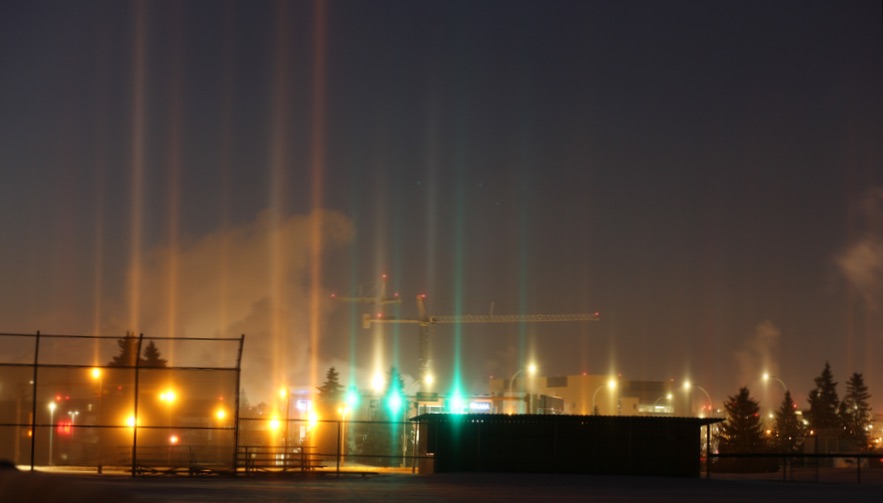
For April very cold in Edmonton!! Close to minus 20 C

on April 2nd with 100 mm lens at ISO 800 f6.3 (49 – 1 min subs)
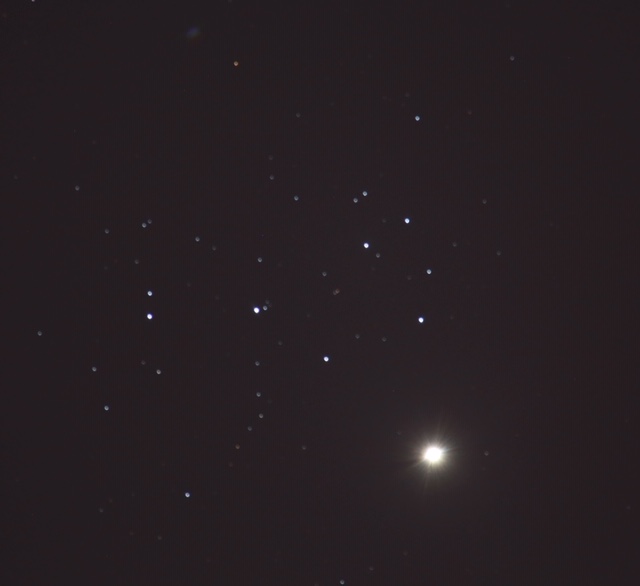
_______________________________________________
Black Hole Warnings: from Reg Dunkley
Many of the RASCal contributions have inspired further exploration. I have included some related links that I found to be of interest and I have added them to some of the contributions. As a warning, however, these explorations can swallow time and become temporal black holes. Heed the Black Hole Warnings: Enter at your own risk.
_______________________________________________
The Jellyfish Nebula: from Garry Sedun
The Jellyfish Nebula, IC443 is located in Gemini at a distance of ~5000 light years. Garry captured this image with his 20 inch Newtonian reflector using reg, green, blue and Hydrogen Alpha filters. Garry’s comments are included below the images.
Black Hole Warning: Garry’s beautiful images have been rotated so that they match the orientation of an image that is discussed in the the following link . The processes that may be driving this nebula are explored.
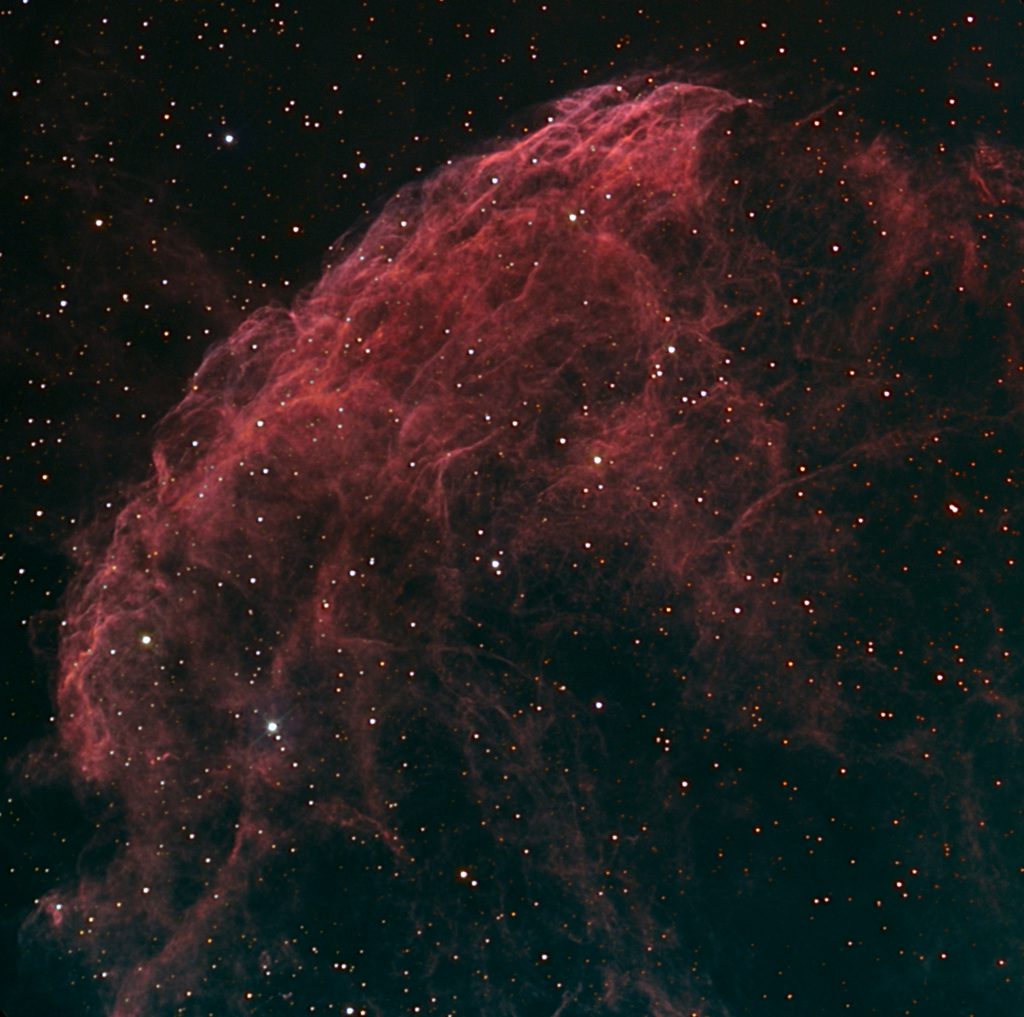
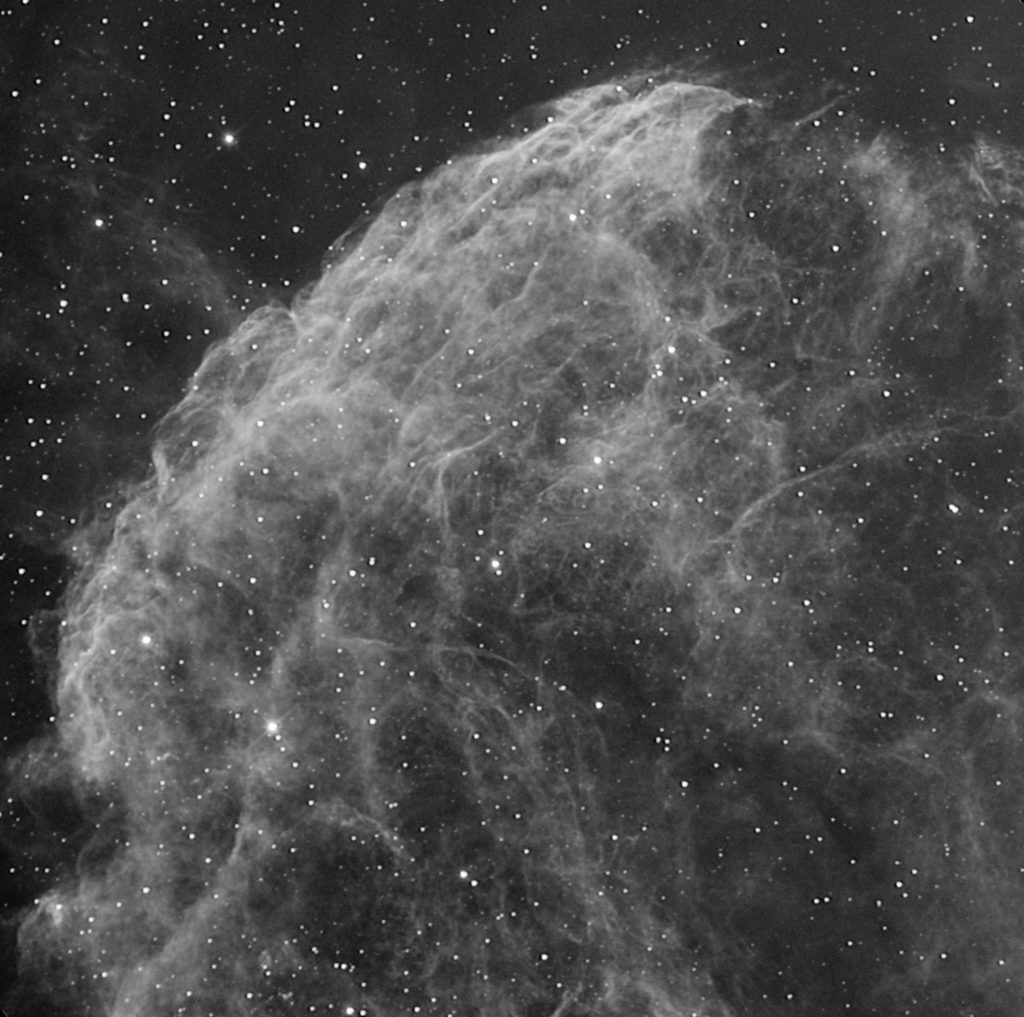
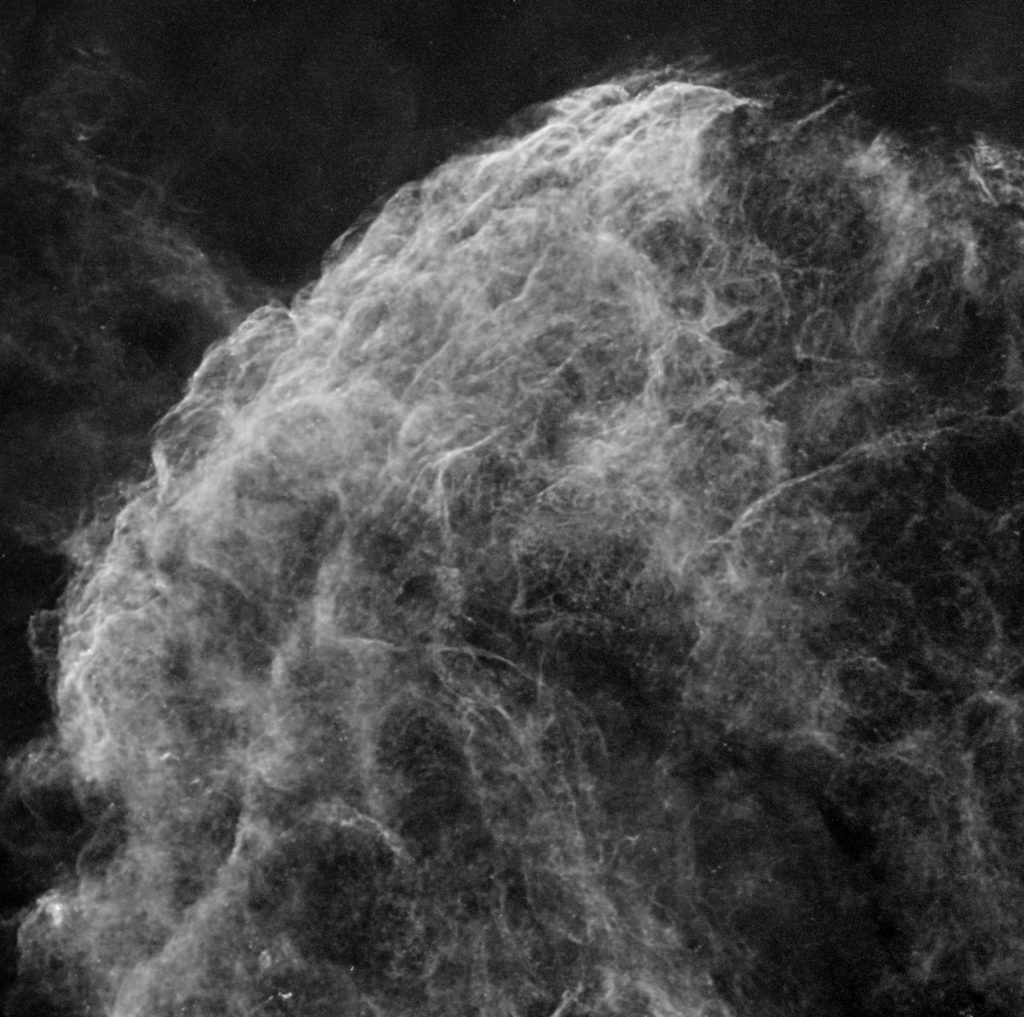
looks like someone’s bad hair day – nice detail though.
_______________________________________________
Lunar Sketch of Palus Putredinis: From Randy Enkin
Randy Enkin has included many features in this sketch including portions happy places like the Mare Serenitatis (Sea of Serenity), the Lacus Felicitatis (Lake of Happiness), and the Lacus Gaudi (Lake of Joy). His primary target, however, was Palus Putredinis (Marsh of Decay) … resuming his theme of maudlin sketching choices.
Black Hole Warning: Randy’s sketches can serve as a gateway to further Lunar exploration. A link to an annotated image of the area has been included to compare to Randy’s sketch. If you compare the two you will realize that Randy has captured many details. Despite its name Palus Putredinis is a fascinating area that includes the landing spot of Apollo 15. This mission target was selected, in part, to place Apollo 15 just north of an elbow of the Hadley Rille, an intriguing meandering narrow channel. Two Rover EVA’s visited the edge of this channel. To learn more and see up close photos visit the following link: https://www.lpi.usra.edu/lunar/missions/apollo/apollo_15/photography/index.shtml#surface
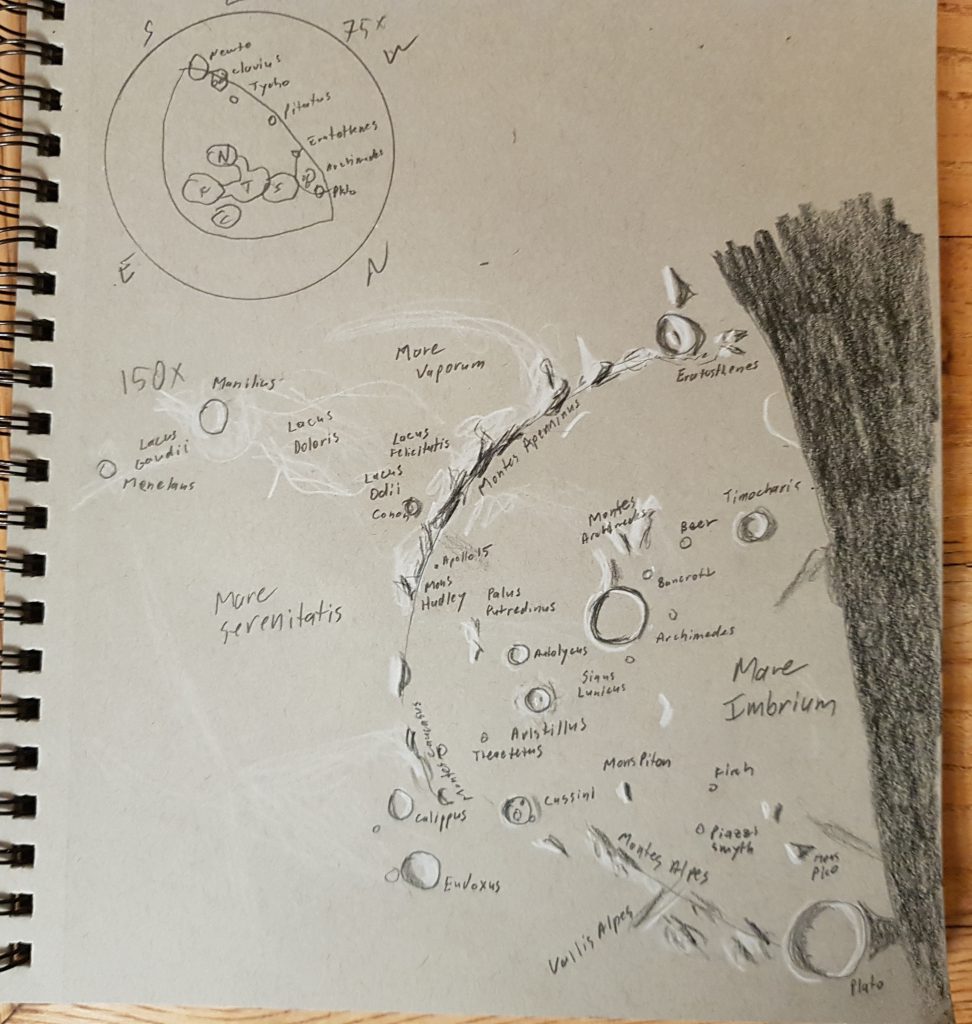
_______________________________________________
Organic Compounds Dominate Composition of Arrokoth: From Marjie Welchframe
A refined image of Arrokoth obtained by NASA scientists in the following link provides compelling evidence that the Kuiper belt is populated by a vast quantity of organic compounds. This provides new insight into the origins of life. https://apod.nasa.gov/apod/ap200401.html
_______________________________________________
Questions from the Couch: From Jim Hesser
If you are feeling like a ‘Couch Potato” then you may be on the right wavelength to enjoy the latest offering from the Dunlap Institute for Astronomy and Astrophysics. They have created a program called Cosmos from the Couch which consists of a series of astronomy lectures that are available online. At 4PM PDT on Thursday April 2nd a panel of presenters will be available to answer your questions. Check it out at http://www.dunlap.utoronto.ca/public-outreach/couch-cosmos/
_______________________________________________
Randy Enkin’s Lunar sketch of Lacus Mortis (Lake of Death)
Black hole warning: To learn much more about this fascinating object follow the link: http://lunarnetworks.blogspot.com/2011/09/lroc-gathering-in-lacus-mortis.html
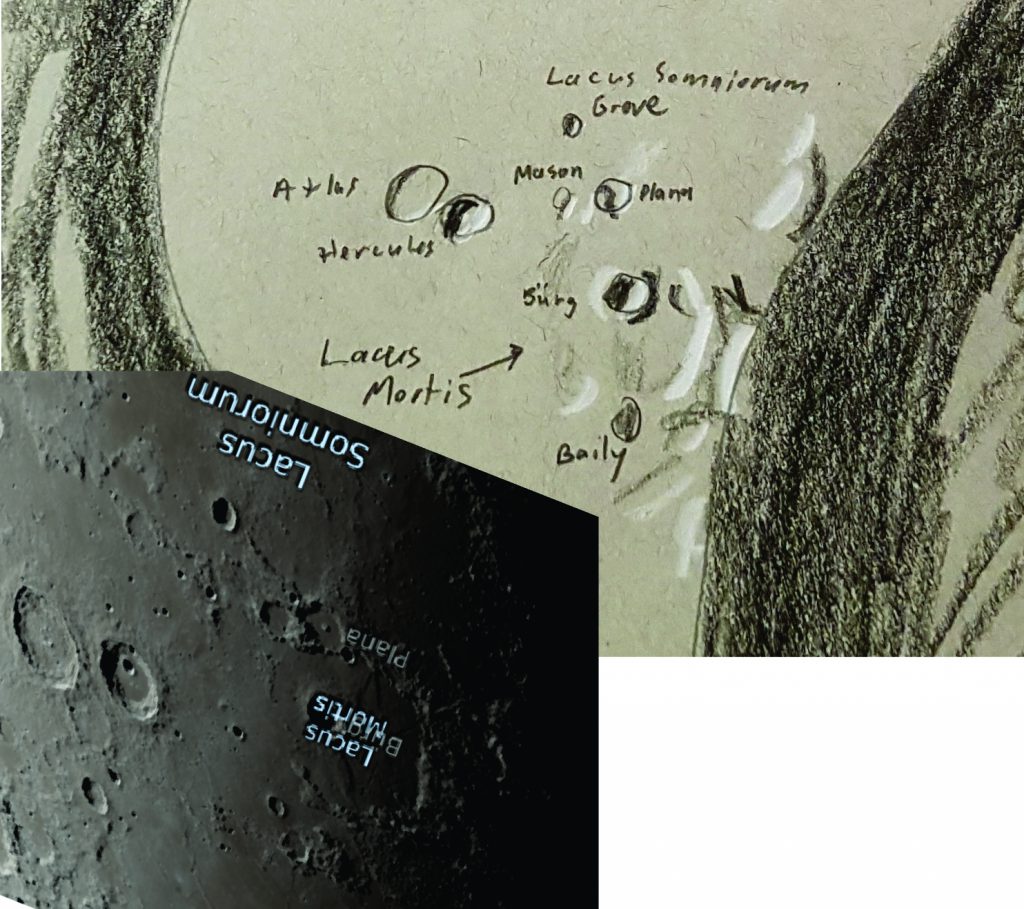
_______________________________________________
George Andrew managed to catch these two images before the clouds rolled in.
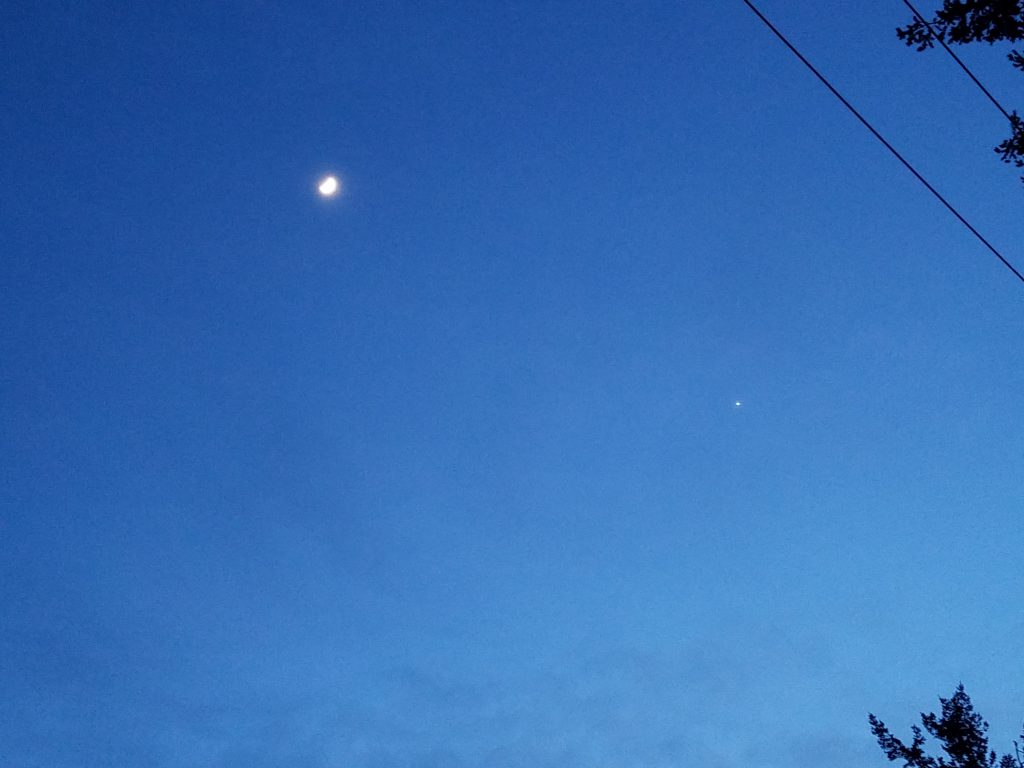
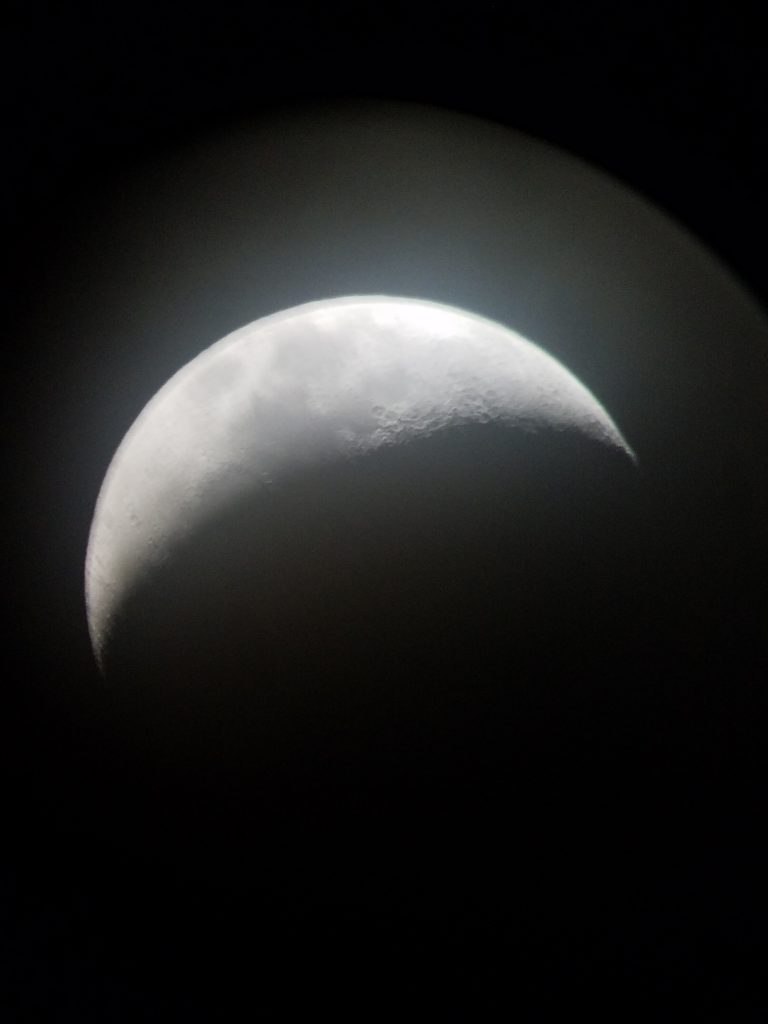
_______________________________________________
Garry Sedun’s images of Orion and the Crab Nebula
Black Hole Warning: To learn more about what is going on under the veil of the Orion Nebula check out pages 4 and 5 the May 2017 issue of SkyNews
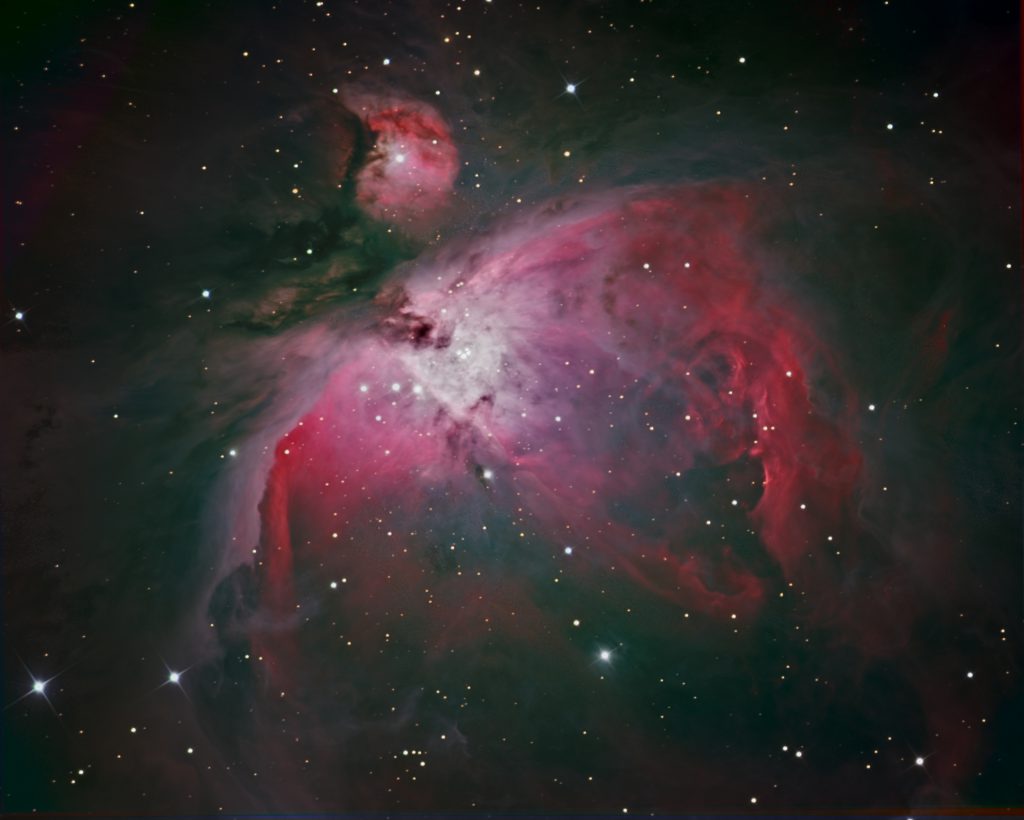
Garry writes: being a novice imager here is the obligatory Orion Nebula in LRGB. This turned out a little red but I left it that way since the PixInsight function that did the colour balance uses the surrounding stars to pick the colour balance.
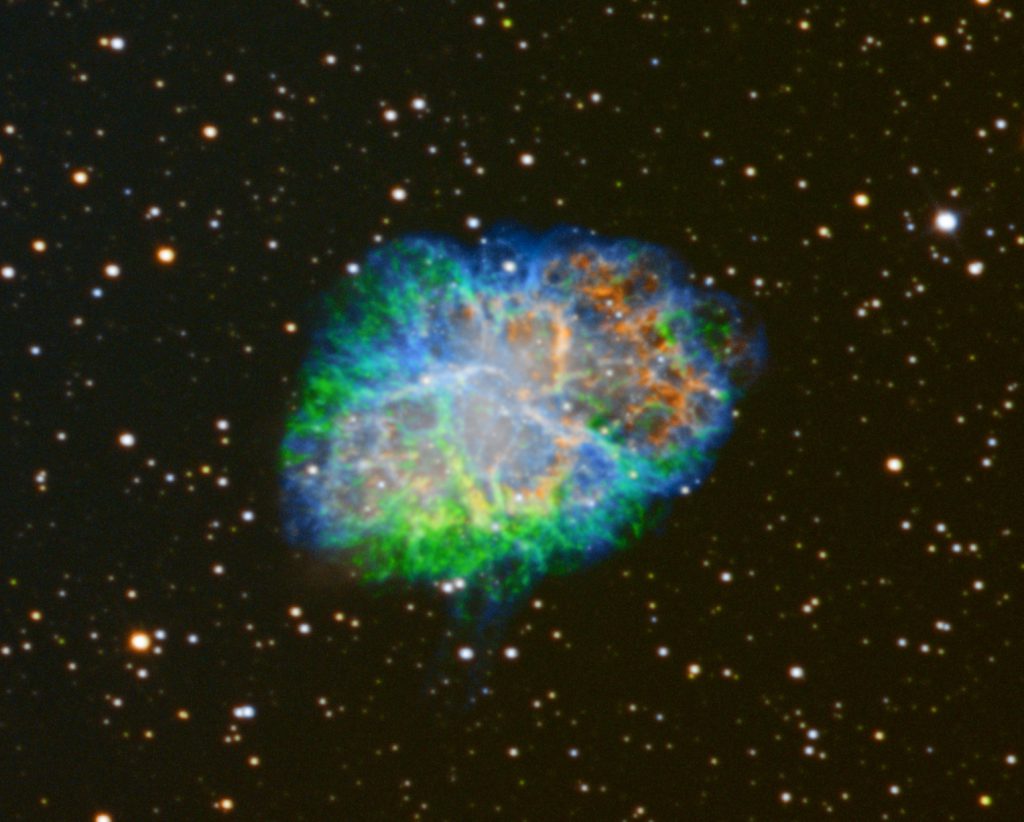
_______________________________________________
Garry Sedun’s saga of his Arizona observatory renovation
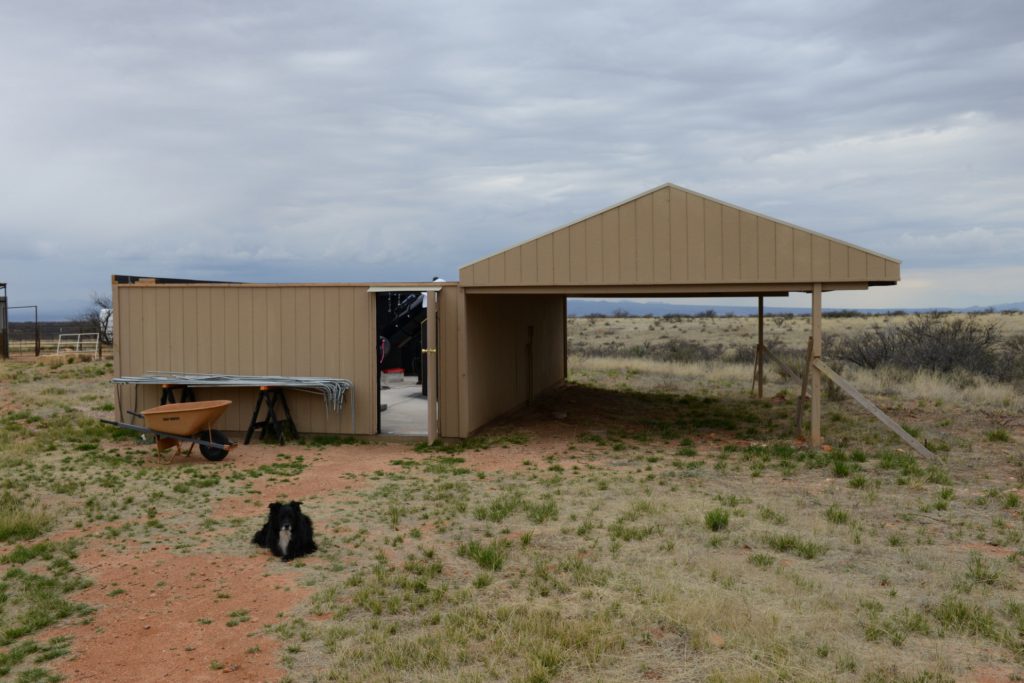
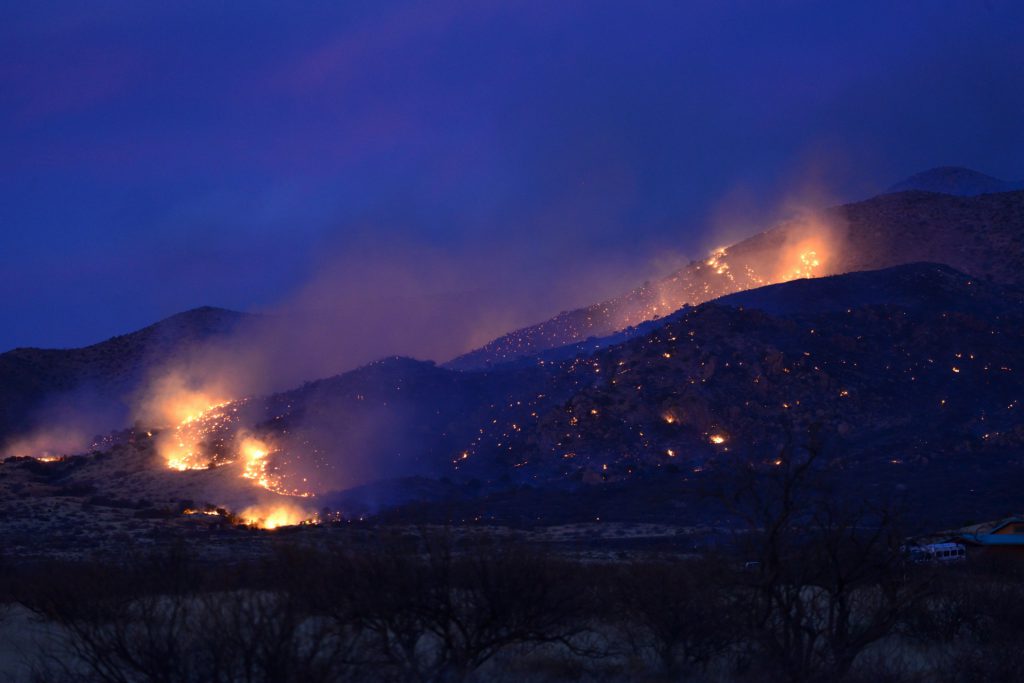
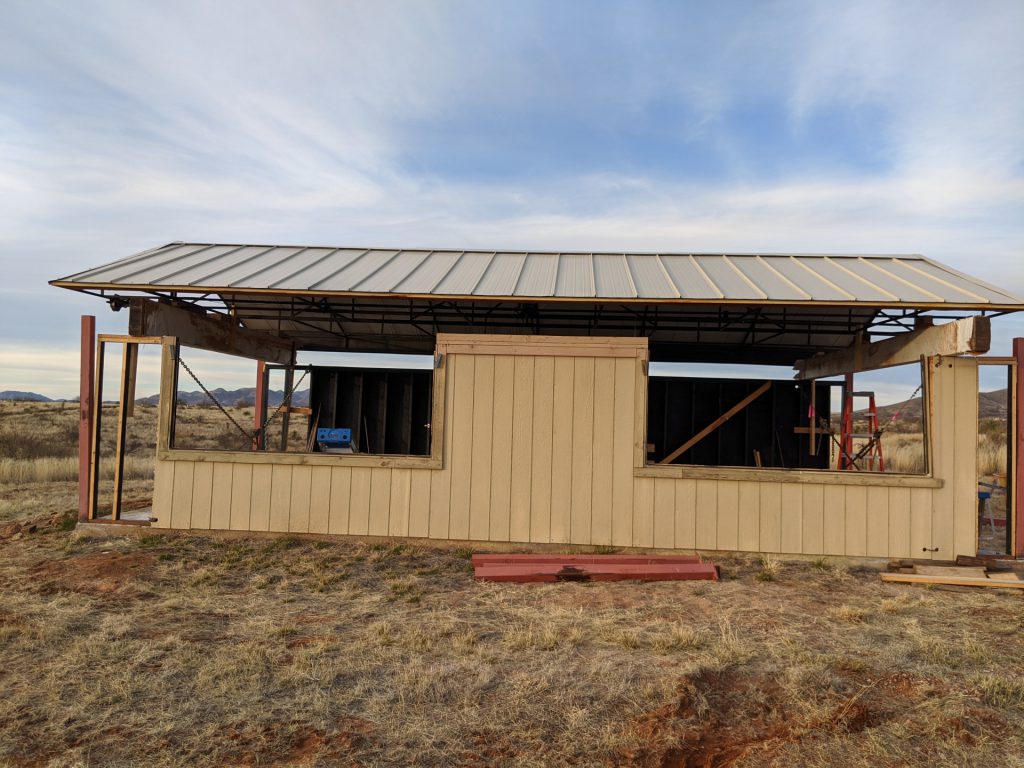
Here is the metal roof being supported and the walls being replaced:
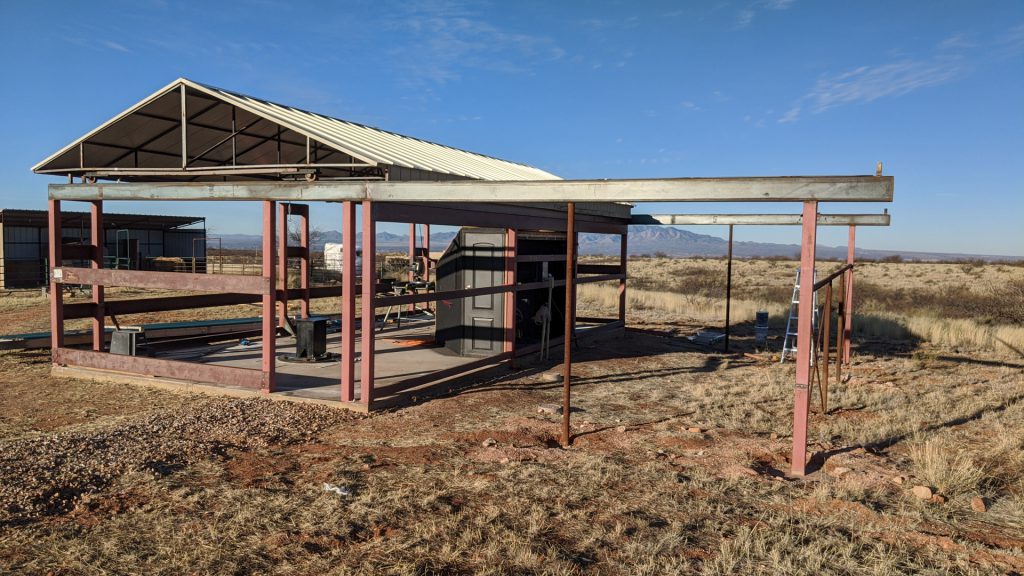
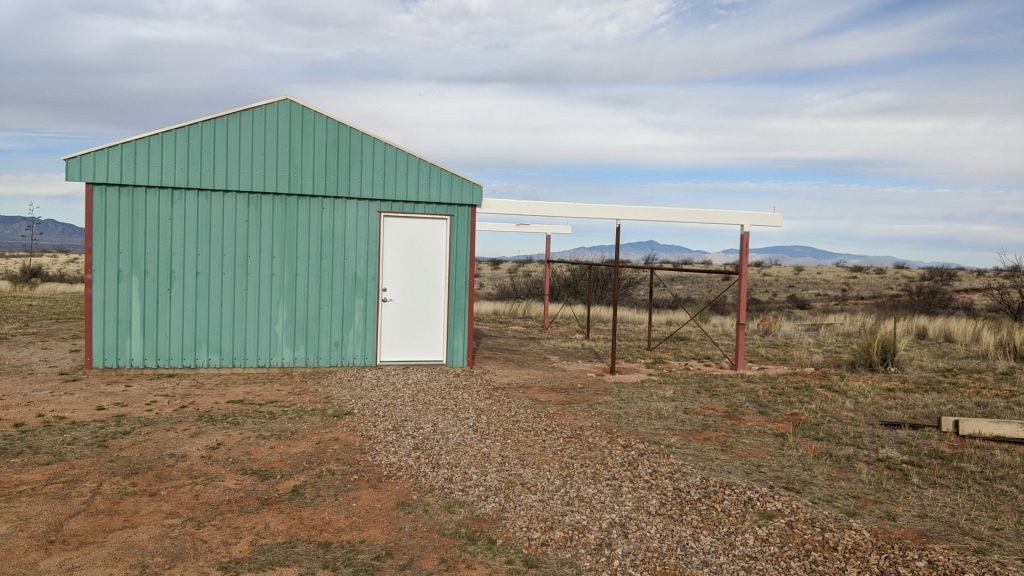
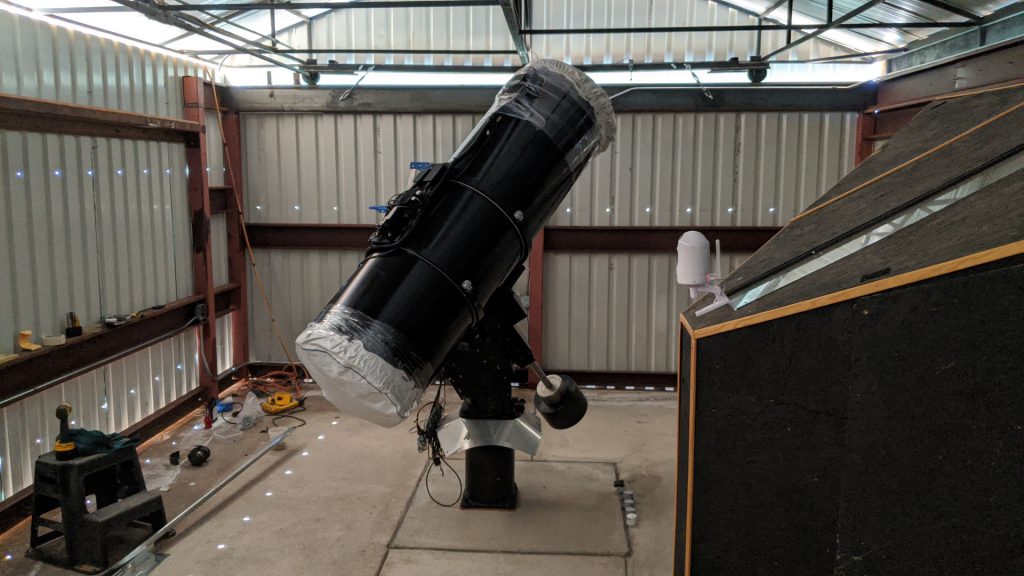
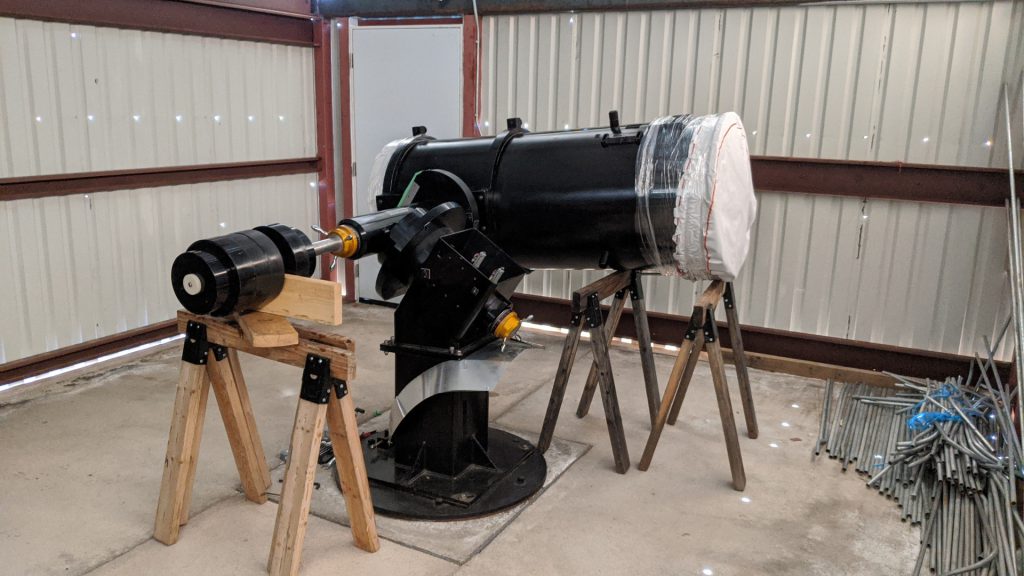
Garry
_______________________________________________
Another image of Orion Nebula in light polluted skies : by John McDonald
Sky glow from the light pollution forced John to resort to a series of relatively short 7.7 second exposures. John writes:
I have been trying to see what astro imaging is possible from the downtown location I now live in. The light pollution is such that I cannot see much visually but wondered if some deep sky imaging might be possible with the camera. The following image of the Orion Nebula is my best attempt so far and turned out to be much better than I expected.
Image details:
2020-03-17 from 8th floor Ross Place, Victoria.
Canon 6D camera with Hutec HEUIB II filter on Williams Optics 105mm scope with Orion AVX mount.
Exposure – 83 – 7.7sec exposures at ISO 3200 with 8 flats and 49 dark frames for calibration.
Processed in ImagesPlus and Photoshop.
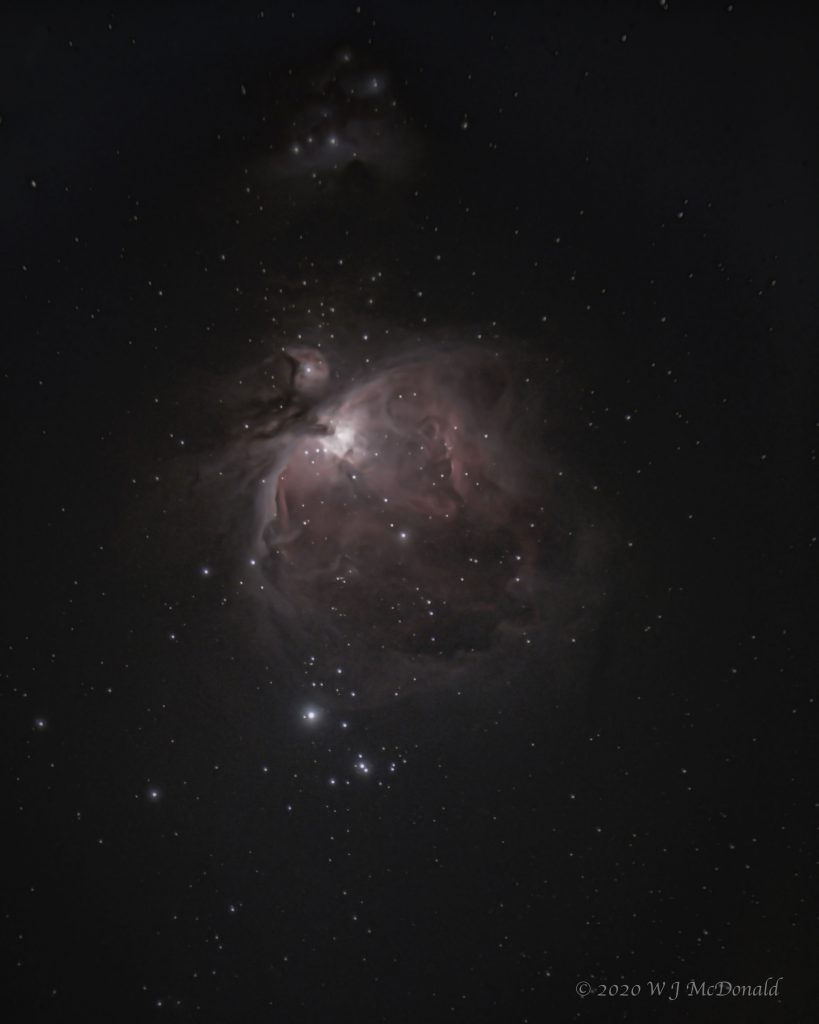
_______________________________________________
You might enjoy Lunarcy! on the Knowledge Network
Dave Robinson thought Lunarcy! may be of interest to some Astro Cafe patrons. This documentary follows a group of disparate individuals who share one thing in common: they’ve all devoted their lives to the moon. It will appear on The Knowledge Network anthology Route 66 at 6 PM on Thursday March 26th and again at 12AM on Friday March 27th.
_______________________________________________
Some Interesting Links from Chris Purse
Observing Highlights:
https://skynews.ca/this-weeks-sky-march-23-to-29/
https://skyandtelescope.org/observing/this-weeks-sky-at-a-glance-march-20-28.2/
Discover the Universe
Bill had directed youth to part of this site but there are lots of resources especially for those interested in outreach. https://www.discovertheuniverse.ca/
AuroraMax
This is the Canadian Space Agency AuroraMax site. It includes a sky camera in Yellowknife that operates during the hours of darkness each day. Another interesting site to explore: https://www.asc-csa.gc.ca/eng/astronomy/auroramax/default.asp
_______________________________________________
You Have to be Venus to Outshine a Blazing Sunset: from Susan Charnock
This Little Light of Mine
Let it Shine
Let it Shine
Let it Shine
These lovely photos were captured by Susan from beautiful Cox Bay near Tofino on March 15/16 2020 using her iPhone
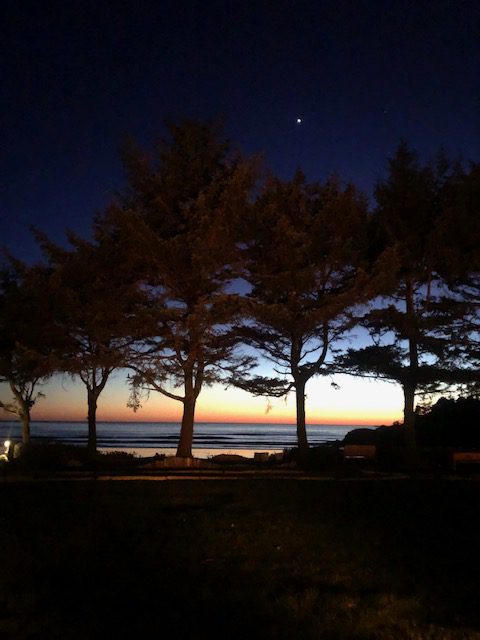
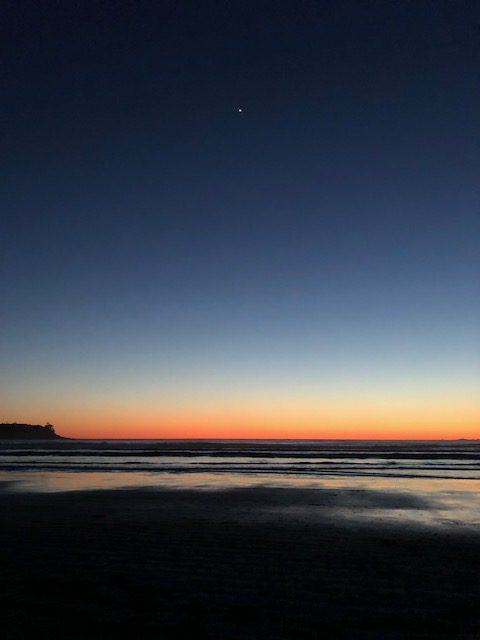
_______________________________________________
Edmonton RASCals Drop By Virtual Astro Cafe: By the Kindness of Dave Robinson
Victoria Centre RASCals who don’t make it to Astro Cafe are unaware that we have been infiltrated by the Edmonton Centre. Dave Robinson, our Light Pollution Abatement Champion is also an Edmonton Centre Secret Agent. Almost every week he showcases beautiful images taken by Edmonton Centre RASCals or provides a progress report on their epic telescope project. Dave continued his mission this week and dropped off some images just before the Astro Cafe would have normally opened its doors.
These images often feature the Edmonton skyline and the following link does not disappoint. On the Spring Equinox Edmonton sky scrapers acquired a “Stonehenge Quality”. https://www.flickr.com/photos/53851348@N05/49689623092/
The following photos were taken by Arnold Rivera. The deep sky images were acquired using a relatively new style of telescope, an 8 inch Celestron RASA (Rowe-Ackerman-Schmidt Astrograph). It is a very fast f/2 scope that delivers a wide flat field free of optical aberrations. Arnold used a ZWO ASI294MC Pro camera, SkyWatcher EQ6R-Pro mount and an Astronomik CLS CCD filter
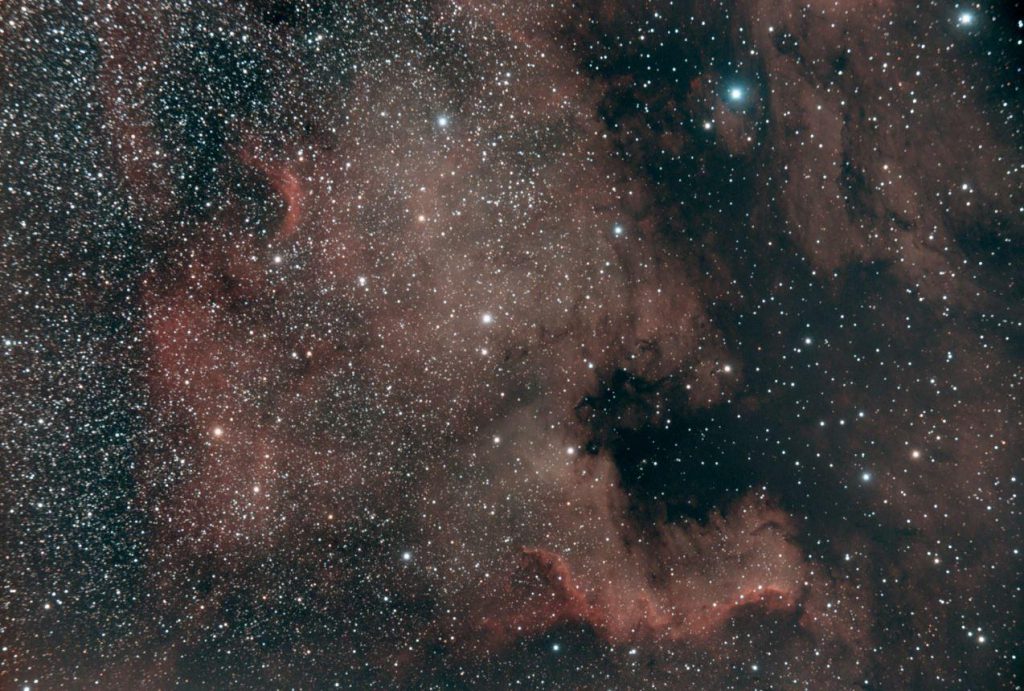
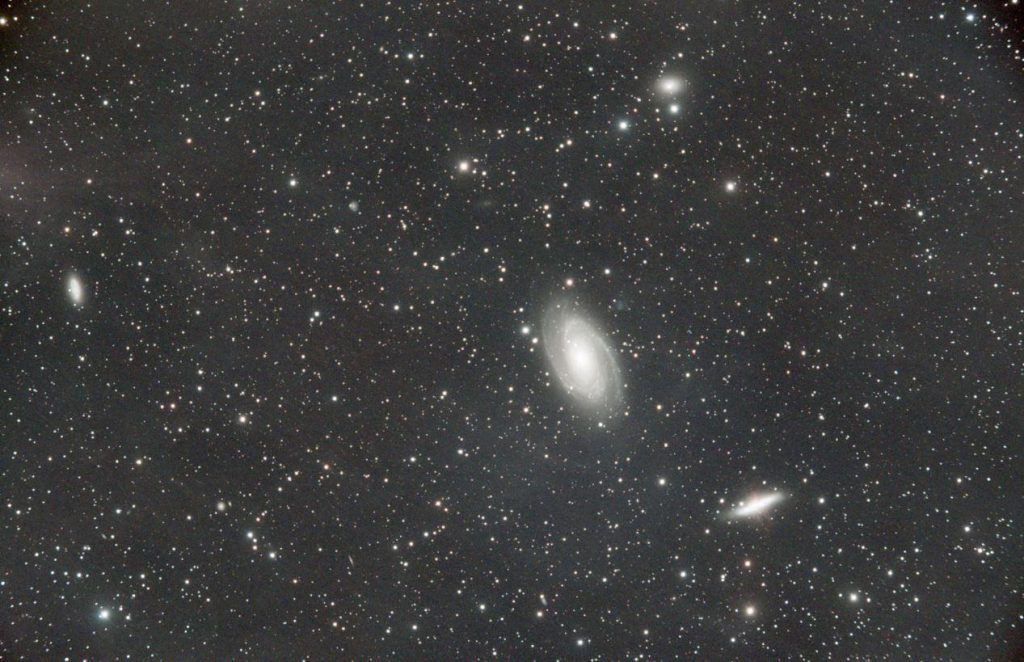

_______________________________________________
Randy Enkin shares lunar sketches of The Marsh of Epidemics
Early in the morning of Tuesday March 18, the Moon was 2.2 days after the 3rd quarter (Q3+2.2). Checking the NASA Scientific Visualization Studio (https://svs.gsfc.nasa.gov/4768), Randy realized that this would be the perfect time to explore target 108 of the Isabel Williamson Lunar Observing Program (https://www.rasc.ca/isabel-williamson-lunar-observing-program): Palus Epidemiarum – The Marsh of Epidemics. It seems like an appropriate reflection on what we are dealing with down here on Earth.
There are only three Paludes on the Moon:
Palus Epidemiarum, Marsh of Epidemics
Palus Putredinis, Marsh of Rot
Palus Somni, Marsh of Sleep
They were named by Julius Schmidt in 1878, who did all his selenology with a 6 inch f/15 refractor. Randy is often seen sketching with his trusty 6 inch reflector.
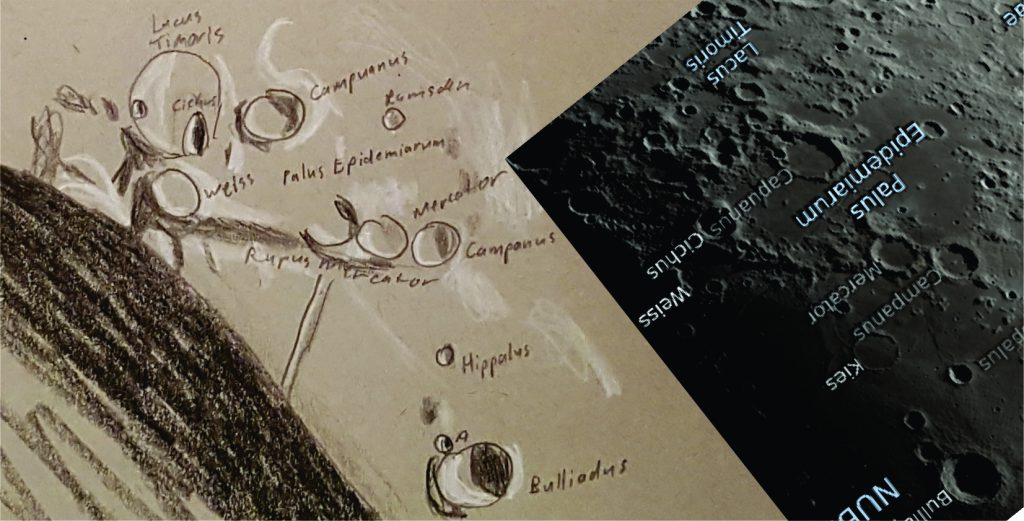
_______________________________________________
Image of Comet C2019 Y4 (ATLAS) capture by Martin Gisborne
Martin Gisborne who recently joined the Victoria Centre took a beautiful photo of Comet C2019 Y4 (ATLAS) from Maple Bay on March 20th when the apparent magnitude was about 14.7. It is expected to brighten to 4 by the end of May, of this year. The three bright stars, above the green-tinged comet, are sigma 1 & 2, and rho Ursae Majoris. Martin used a Meade 70mm Astrograph with a Nikon D850 on a Skywatcher Adventurer mount.
A 30 min exposure using 30 unguided light frames at 60secs (ISO 1600) and 24 flat frames and 17 dark frames. The image pre-processing in PixInsight with further nonlinear processing in Lightroom and Photoshop. Further information on the comet at: https://theskylive.com/c2019y4-info and https://cometchasing.skyhound.com/comets/2019_Y4.pdf
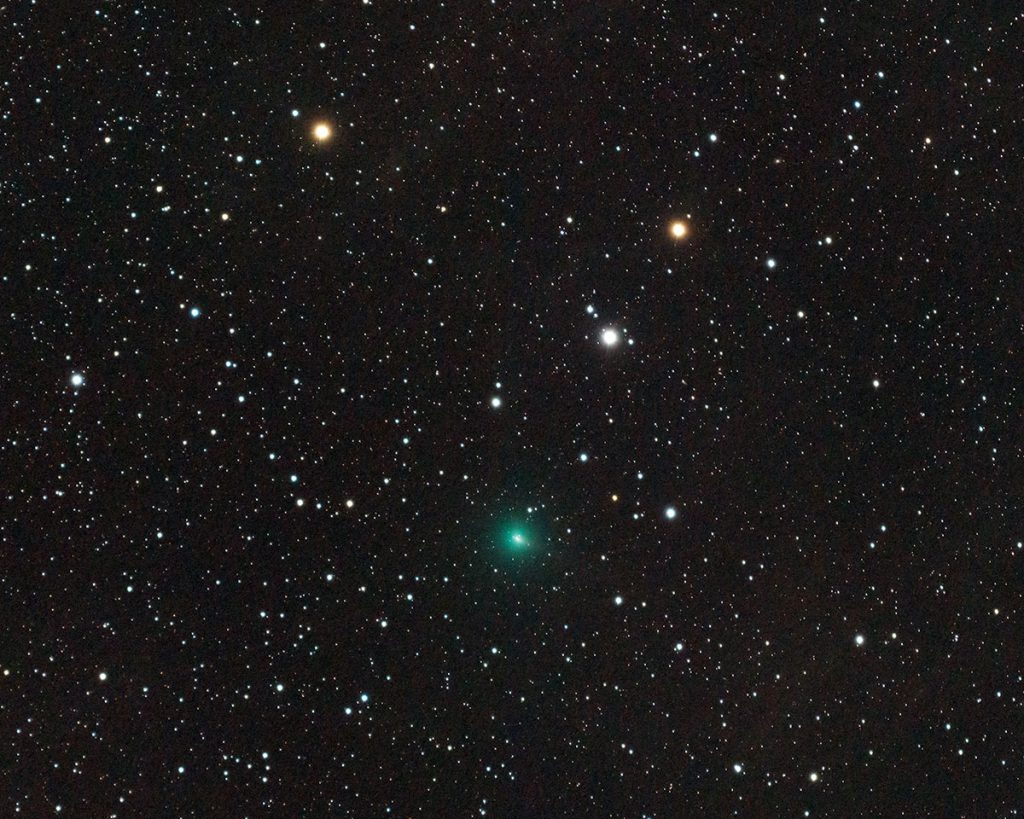

Dave Robinson relayed details from Alister Ling of the Edmonton Centre about the sighting opportunities in our area when it makes its closest approach in late May. There is potential that this may be a spectacular comet and it is generating considerable excitement. More details will be shared soon.
_______________________________________________
Jim Hesser announces that an encore production run of “Big Dipa”, a popular a double IPA beer brewed by Moon Under Water is now available. It was introduced in 2018 to the honour of the 100th anniversary of the Plaskett Telescope. They will deliver to your door for $5.
_______________________________________________
The Whale and the Hockey Stick: from Doug McDonald
Doug was able to get just over 6 hours during two clear nights of NGC 4631, the Whale, a nearly edge-on barred spiral galaxy in Canes Venatici, along with its companion, the “Pup”. He was also able to fit in NGC 4656/57, the so-called Hockey Stick or Crowbar galaxy, a member of the same group. It’s odd shape and tidal tail are thought to be due to tidal interactions with NGC 4631. Doug captured this image with his 5″ refractor using 330 subs of RGB data, with 8 subs of Ha to bring out the H2 regions.
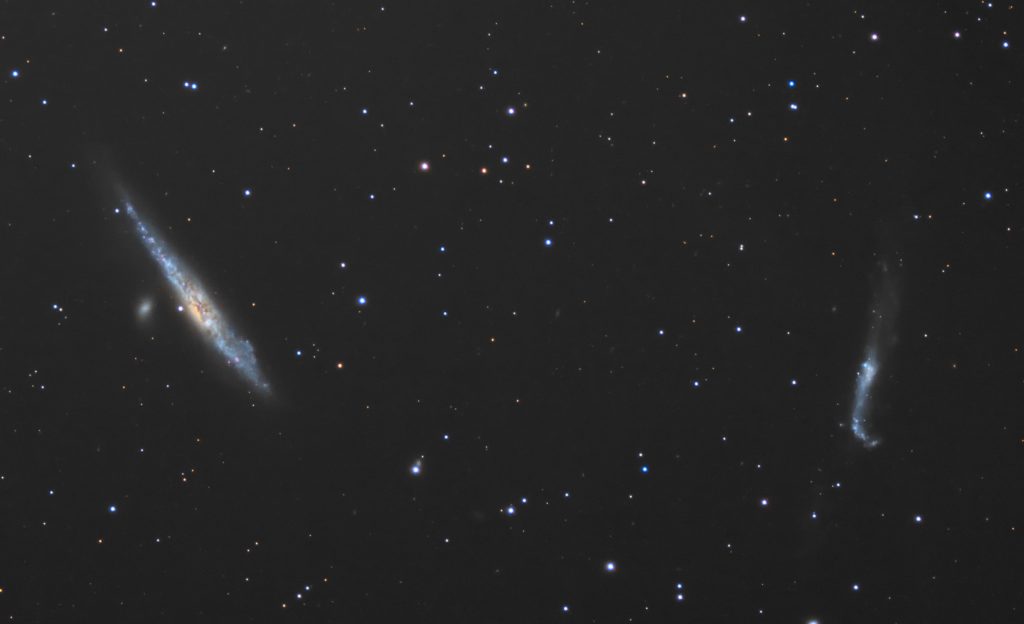
_______________________________________________
What is an Orrery? by Barbara and Kurt Lane
It’s a mechanical model of the solar system used to demonstrate the motions of the planets about the Sun, probably invented by George Graham, a watch maker (d. 1751) under the patronage of Charles Boyle, 4th Earl of Orrery. In use for several centuries, the device was formerly called a planetarium. The orrery presents the planets as viewed from outside the solar system in an accurate scale model of periods of revolution. The planets’ sizes and distances, however, are necessarily inaccurate. (source: https://www.britannica.com/science/orrery-astronomical-model)
One of the most famous orreries is this one at the British Museum in London
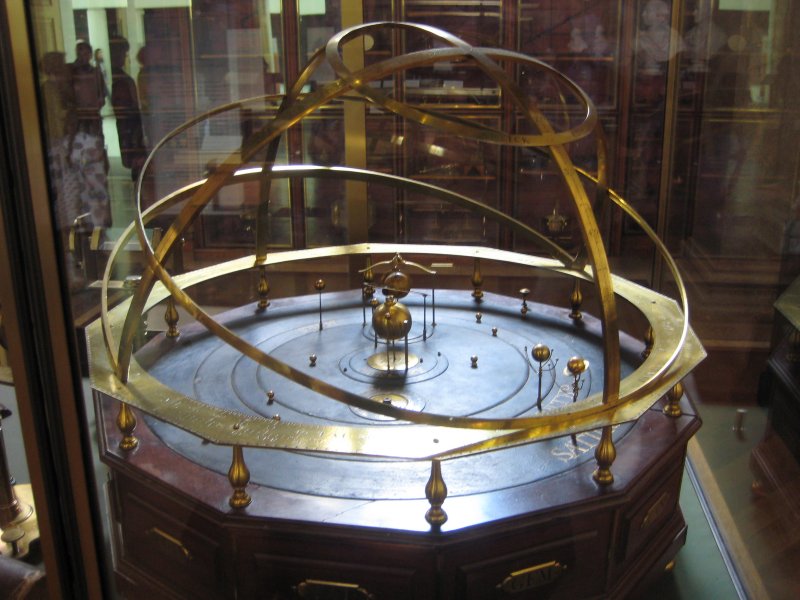
And then there is this one! – which is not quite so famous, and not quite so grand, but it is a lot closer. This is a time series film of Kurt Lane’s orrery which was a birthday present from Barbara. (Thanks Nathan for the idea of doing a time series.) And yes it has Pluto as a planet still.
_______________________________________________
David Lee recommends the documentary Cielo
Cielo is a cinematic reverie on the crazy beauty of the night sky, as experienced in the Atacama Desert, Chile, one of the best places on our planet to explore and contemplate its splendour. It appears on the Documentary Channel on Friday March 27 at 9pm PDT. You need to subscribe to the channel but the following promotional link is RASCal worthy. https://www.cbc.ca/documentarychannel/m/docs/cielo
_______________________________________________
Nathan’s Virtual Contribution
Cookies at Astro Cafe have become a critical component of the Victoria Centre Rascal diet. In order to thrive during this interlude of isolation you may want to consider Nathan’s example.

_______________________________________________
Mike Nash Shoots the Moon with his DSLR

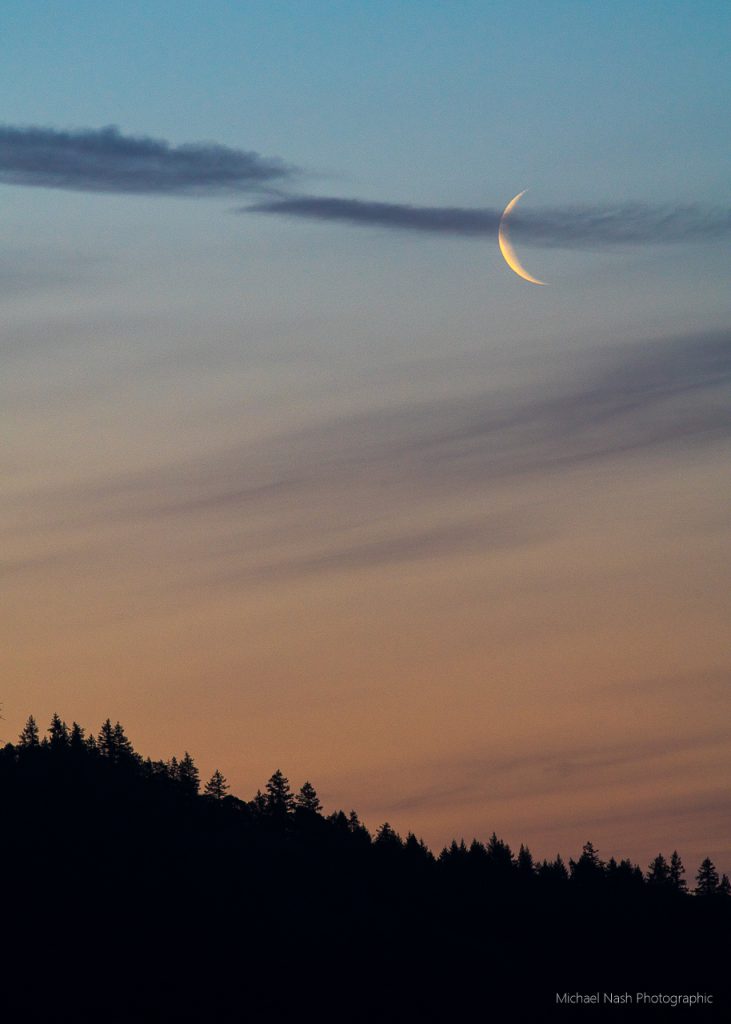
_______________________________________________
Jim Hesser informs us that The second Dunlap Cosmos From Your Couch instalment live streams at 4PM PDT Thursday March 19:
Dark Energy and Dark Matter by Dr. Renée Hložek
Do you lie awake at night wondering what the difference is between dark matter and dark energy? Join Prof. Renée Hložek tonight for a talk about how they are different, how they change the Universe and why you should care about these exciting dark components of our cosmos! She’ll tell you not only about what they are and about some of the exciting telescopes we are building to discover the secrets of the Universe. Bring your cup or tea or cocktail, settle down and get ready to explore our exciting cosmos.
Jim Hesser also recommends Installment 1 by Mike Reid, Misconceptions About the Big Bang, is viewable at the following link (it starts at about 39 minutes in the recording): https://www.youtube.com/watch?v=gOgPvLzwFWQ
_______________________________________________
Link to Discover the Universe for 8-12 year old audience from Bill Weir: March 18th
I’d like to add this link from the Discover the Universe folks. I’s a FREE daily 30minute stream on their YouTube page aimed at the 8-12 yr old set. https://www.discovertheuniverse.ca/post/astro-at-home
It will help them stay in touch with the sciences.
_______________________________________________
Followup image in light polluted skies by John McDonald: March 18th

_______________________________________________
Urban imaging in light polluted skies by John McDonald March 16th
Having recently moved to a tower in the middle of a sea of light pollution in downtown Victoria I thought I would have to do all my deep sky imaging elsewhere. However, I am missing being able to do some imaging from home so have started to investigate the use of a light pollution filter. I have an SPS (light pollution suppression) filter from the Hutec company https://www.hutech.com/ that fits inside my Canon 6D so can be used with any lens or telescope. No filter can get rid of the effect of light pollution but it seemed like a good idea to see what it could do.
As a first test, I put the camera with its filter and 24 mm lens on a tripod and did some short exposures of the Orion Constellation. By doing a rough alignment and stacking combining 6 frames with 10 sec exposures at f/2.8 and iso 160 I got the following image. It is noisy and lacking detail as a result of only 1 min of total exposure but came out better than I expected for a sky in which I could barely see the constellation by eye.
Next, I will try doing some longer exposures with a tracker and telescope so if you live in polluted skies like me you might want to stay tuned.
John
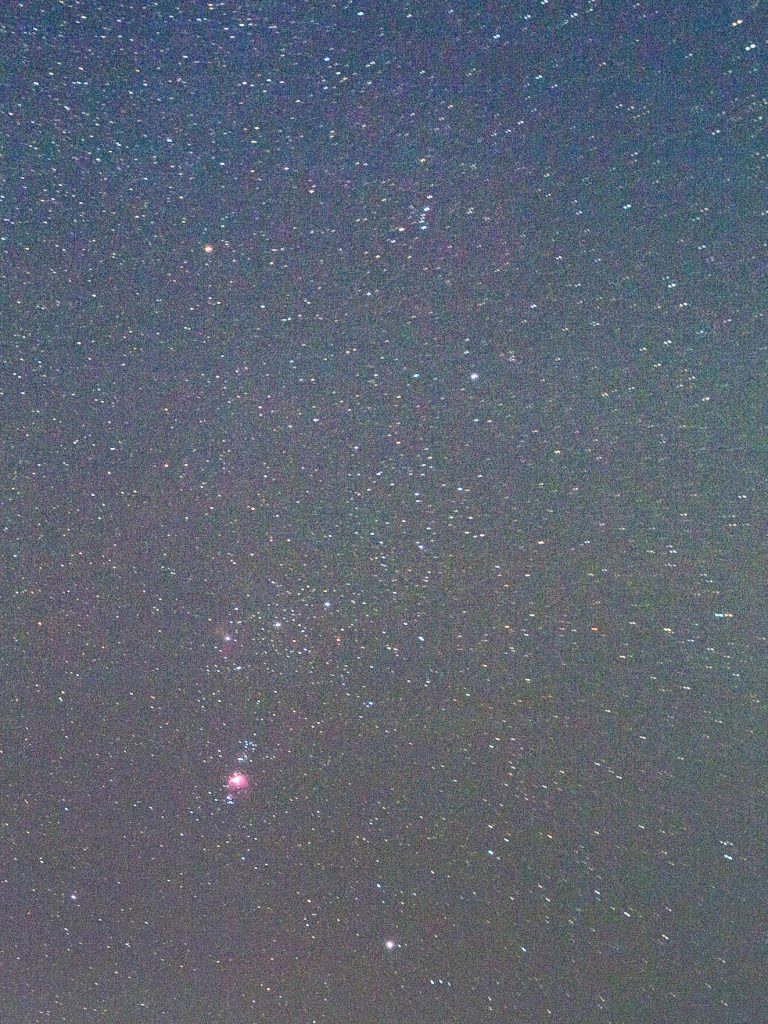
From Your Astro Cafe Hosts ______________________________
CELESTIAL OR TERRESTRIAL??
One of these two pictures is a celestial phenomenon that was the subject of Dr. Tyrone Woods’ talk at last Wednesday’s monthly meeting (or as it is now know pandemic declaration day) while the other is a terrestrial phenomenon that is the subject of Dr Bonnie Henry’s daily talks.
The terrestrial phenomenon does share some of the attributes of the celestial, which is why we have invoked social distancing and changing from in person Astro Cafe to Virtual Astro Cafe for the time being. As this quote from the New York Times explains.“Most countries only attempt social distancing and hygiene interventions when widespread transmission is apparent. This gives the virus many weeks to spread,” … with the average number of people each new patient infects higher than if the measures were in place much earlier, even before the virus is detected in the community.“By the time you have a death in the community, you have a lot of cases already,” said Dr. Mecher. “It’s giving you insight into where the epidemic was, not where it is, when you have something fast moving.” He added: “Think starlight. That light isn’t from now, it’s from however long it took to get here.” (Dr Carter Mecher is a senior medical adviser for public health at the Department of Veterans Affairs and a former director of medical preparedness policy at the White House during the Obama and Bush administrations.)
So keeping looking up, but make sure you have washed your hands!

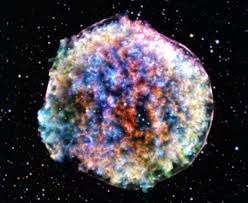
Coronavirus versus Supernova
Coronavirus image from https://www.the-scientist.com/news-opinion/scientist-scrutinize-new-coronavirus-genome-for-answers-67006
Supernova image from https://www.nasa.gov/image-feature/the-tycho-supernova-death-of-a-star

As there should be some clear evenings have a look at this week’s highlights:
SkyNews This Week’s Sky: March 16 – 22
Sky and Telescope: Sky at a Glance March 13 – 21
